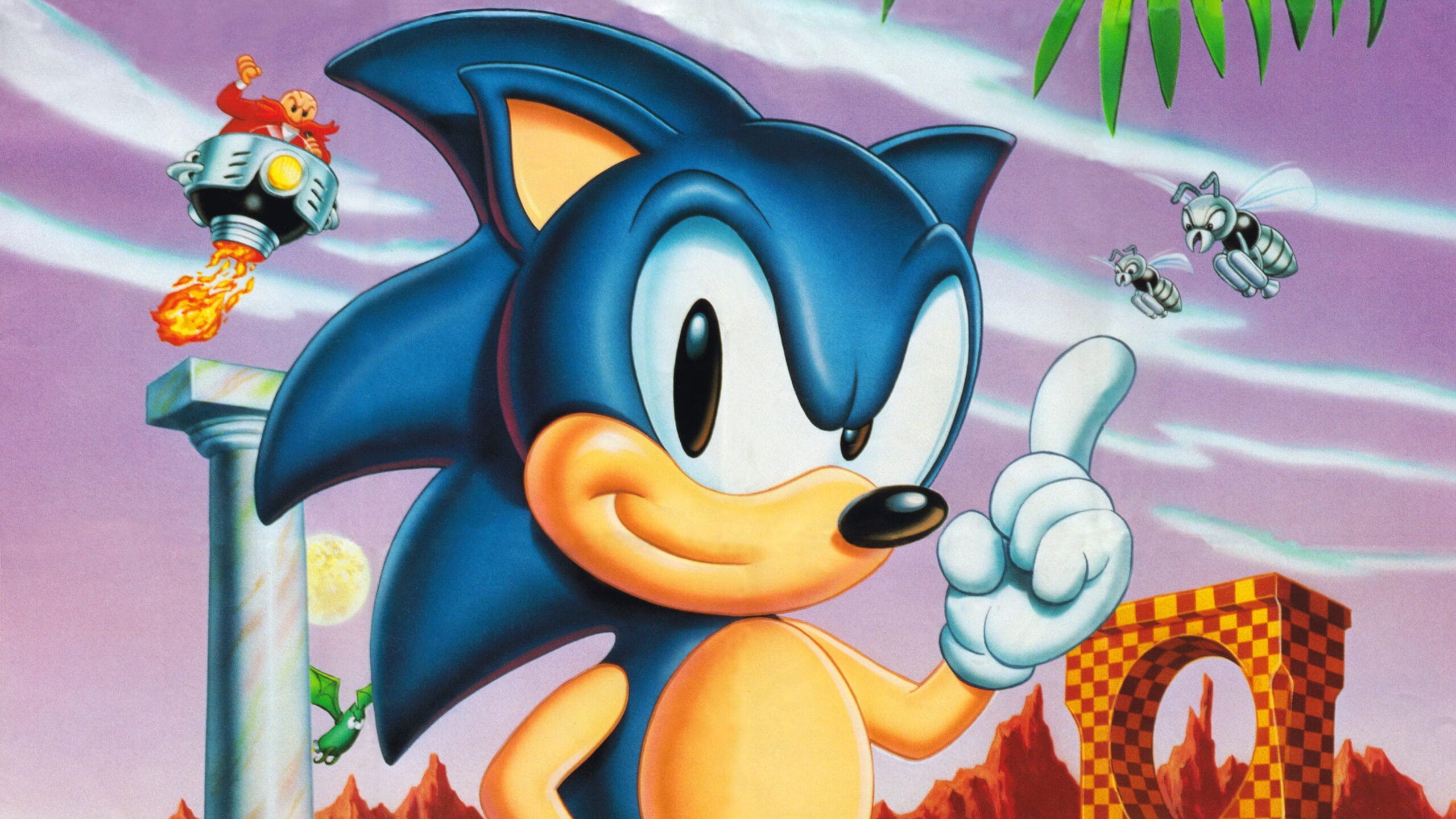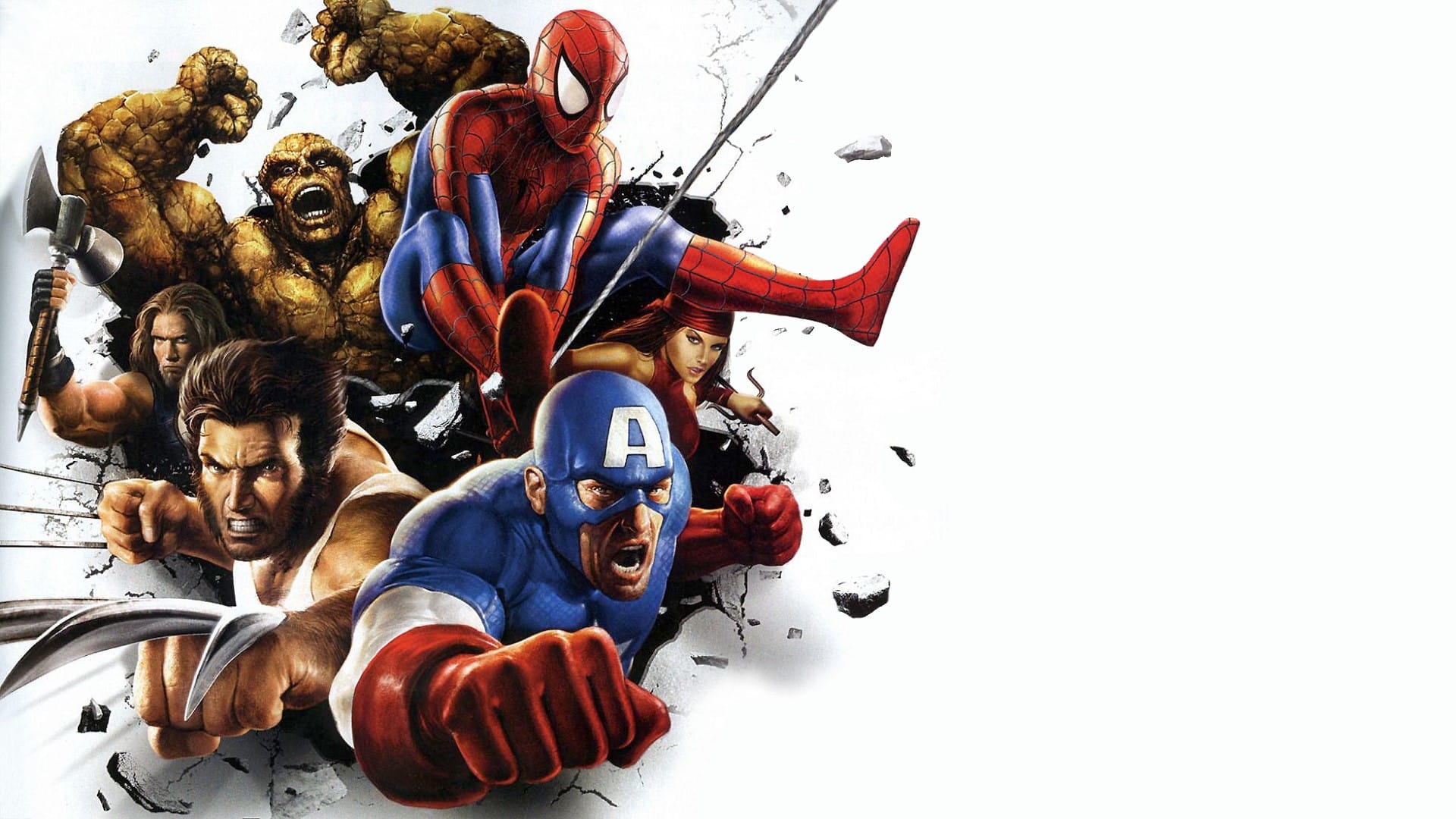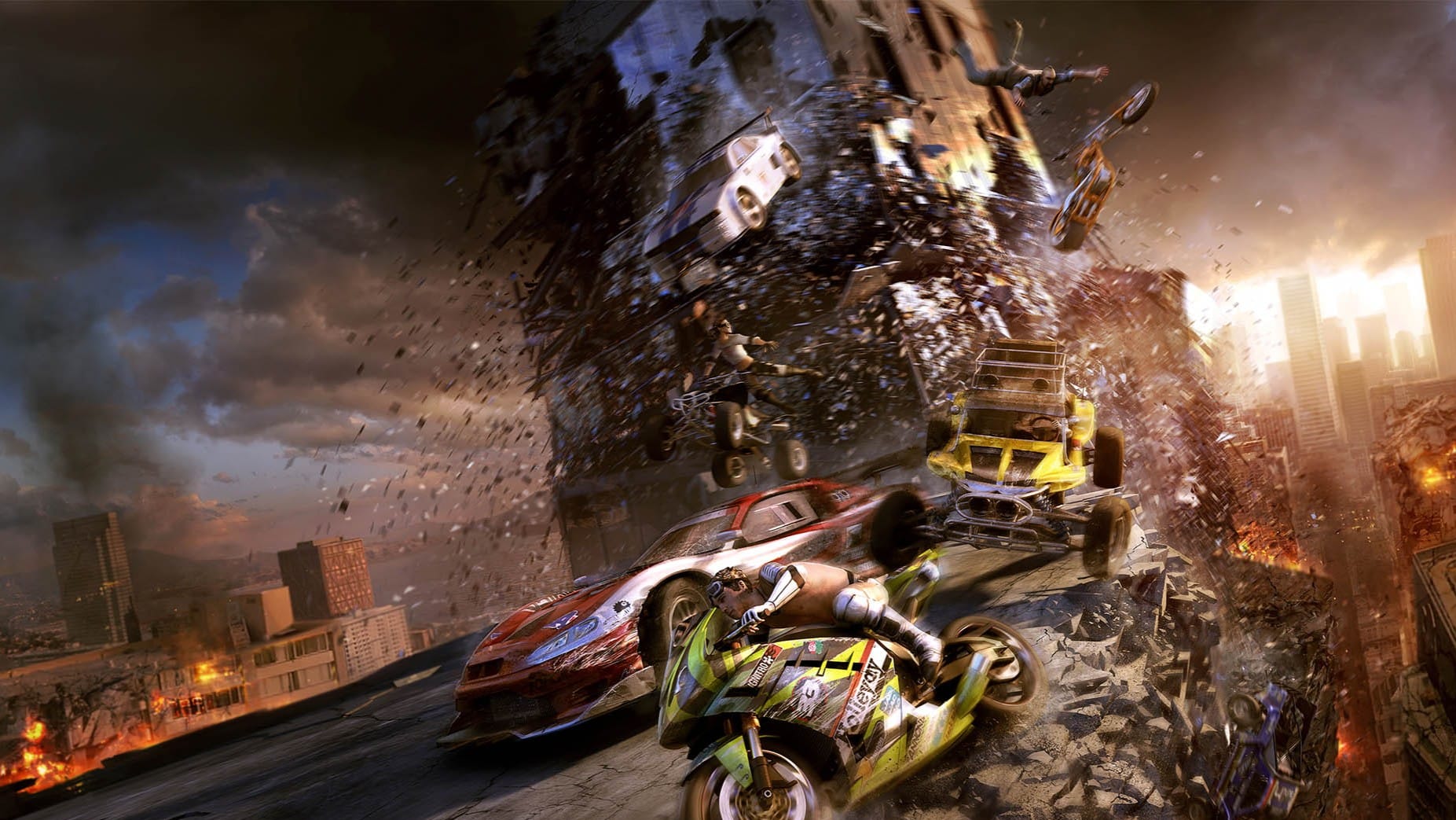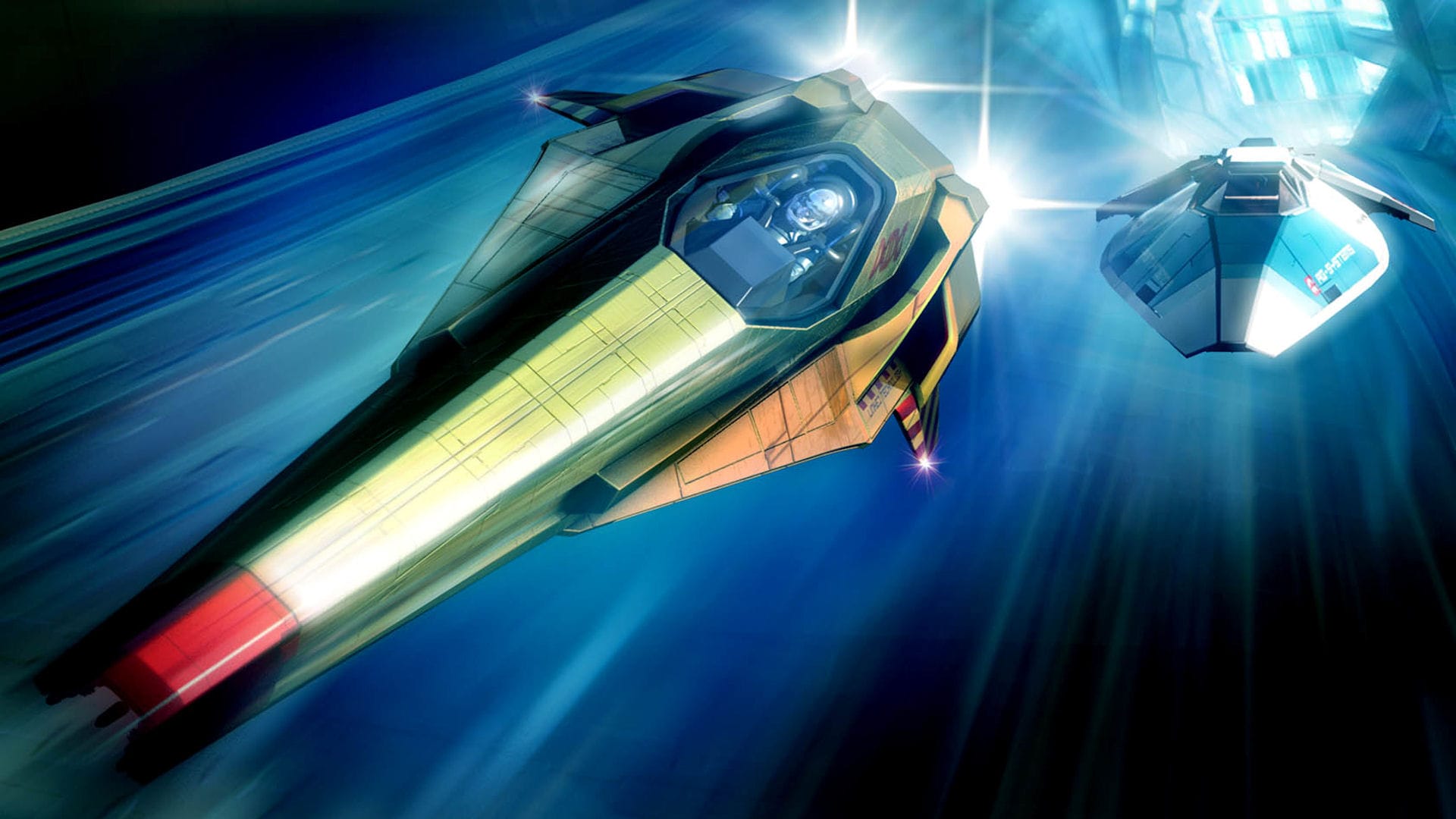Few consoles captured the restless, high-octane spirit of the early ’90s quite like the Sega Genesis. Can you hear the faint, digitized echo of “SE-GA” when you close your eyes? You’re not alone. This was a machine built on attitude—abrasive, electric, and absolutely relentless. And nowhere was that energy more potent than in its platformers.
These were games that didn’t just invite you to run and jump; they dared you to sprint, soar, ricochet, and barrel-roll through worlds dripping with neon flair and cartoon chaos. Some were blockbuster icons. Others were cult treasures hiding in plain sight. All of them helped define a generation of players who craved speed, personality, and a touch of unruly invention.
Today, their brilliance still resonates. The pixel art remains vibrant. The soundtracks still thrum with synthetic swagger. And the gameplay? Still razor-sharp. So, dust off your cartridge slot and get ready to discover 30 platformers that turned the Genesis into a 16-bit powerhouse of creativity—and why they continue to outshine the competition.
Sonic the Hedgehog

- Developer: Sonic Team
- Release Date: June 23, 1991
While other games were content with plodding paces and cautious jumps, Sonic the Hedgehog was a shot of adrenaline straight to the console. That first sprint through Green Hill Zone and the checkered terrain blurred beneath your feet defied every law of plumbing, and that invigorating soundtrack promised a new kind of cool. It wasn’t all about raw speed, though. The genius lay in the interplay between velocity and deliberate platforming. The game constantly tempted you to go faster, to find that perfect flow where you became an unstoppable force of nature. Each zone established a vibrant, cohesive identity that felt lightyears beyond its 16-bit competitors.
Why It's Worth Playing: Sonic the Hedgehog is the blueprint, the origin of an icon that defined a console's identity. It codified the thrill of momentum-based gameplay that countless games still try to capture. Beyond the nostalgia, it remains a tightly designed, challenging, and visually stunning platformer. It’s essential gaming literacy—the moment you first hit that spring and soared into the sky, you understood what the Genesis was all about.
Sonic the Hedgehog 2

- Developer: Sonic Team
- Release Date: November 21, 1992
If the first game was a shot of adrenaline, Sonic the Hedgehog 2 was the mainline drip. The most obvious game-changer was the introduction of the Spin Dash. This single move transformed the moment-to-moment gameplay, giving you control over the speed and eliminating those frustrating moments of inertia. And let’s not forget Tails! The two-player mode, where a friend could chaotically fly around the screen, was pure, unadulterated magic. Then you have the zones themselves. Good grief, the level design is just sublime.
Why It's Worth Playing: Sonic 2 bigger, faster, and more inventive than its predecessor in every conceivable way. It’s the perfect storm of refined mechanics, iconic level design, and a soundtrack that is burned into the brain of anyone who owned a Genesis. The pacing is flawless, the challenge is razor-sharp, and the sense of spectacle is through the roof.
Sonic the Hedgehog 3
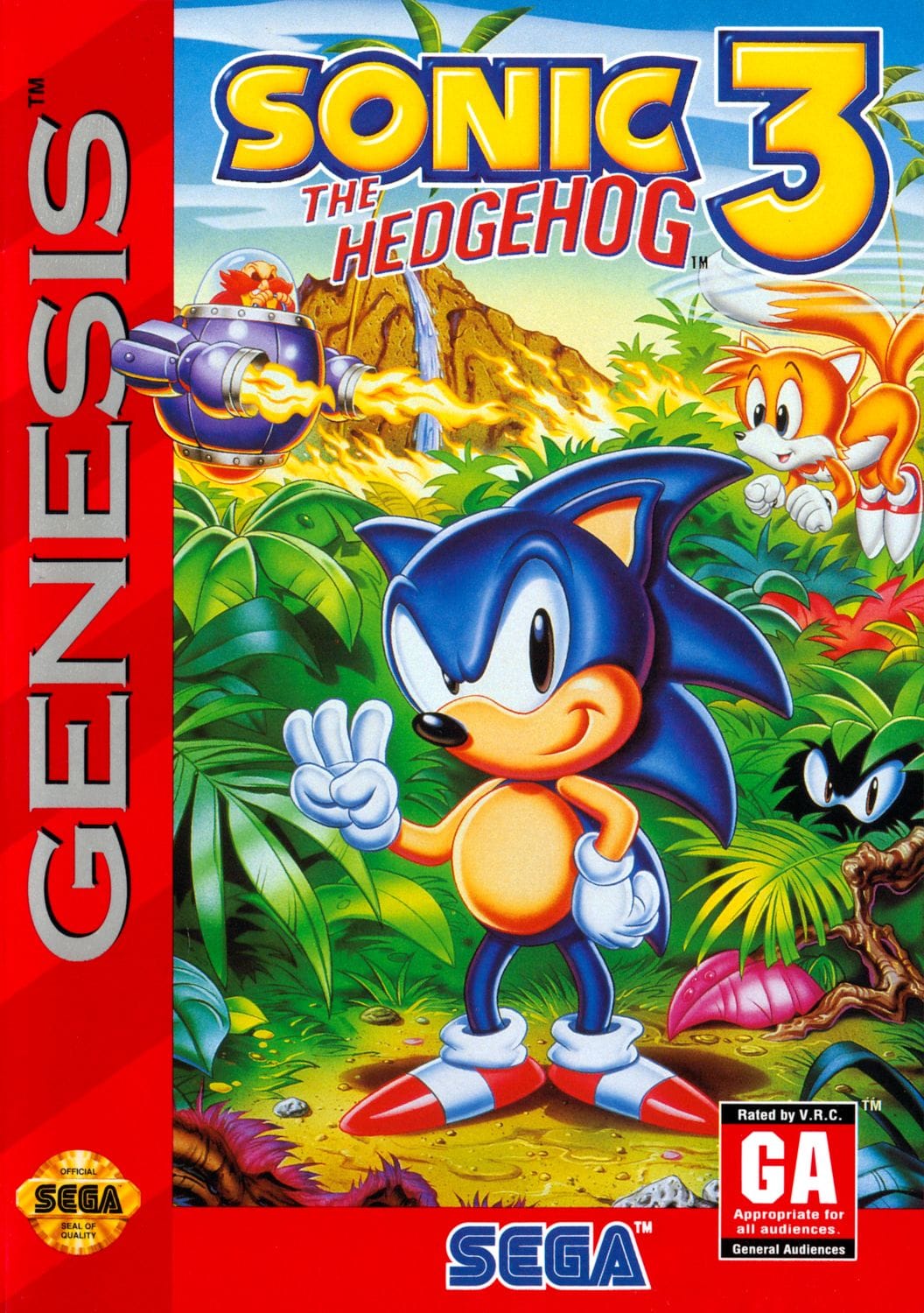
- Developer: Sonic Team
- Release Date: February 2, 1994
Sonic the Hedgehog 3 is where the series truly embraced its cinematic aspirations, and the result is a game that feels monumental. The introduction of the elemental shields wasn’t just a cosmetic change; it fundamentally altered how you navigated levels. The lightning shield let you double-jump to secret areas, the bubble shield let you breathe underwater and bounce, and the fire shield let you blast through enemies and dash across the landscape. And let’s not forget the sheer joy of finding those giant rings and exploring the new Special Stages, a vast improvement over the half-pipe chaos of Sonic 2.
Why It's Worth Playing: Sonic 3 represents the peak of the series' ambition on the Genesis. The addition of a save feature—finally!—acknowledged that this was a grander adventure that couldn't be conquered in a single sitting. The level themes are incredibly inventive, the new mechanics add layers of strategy, and the presentation, from the sprite work to the soundtrack, is top-tier. It’s a slower burn than Sonic 2, but it rewards your investment with one of the most content-rich and satisfying platformers on the system.
Sonic & Knuckles

- Developer: Sonic Team
- Release Date: October 18, 1994
Sonic & Knuckles was the second half of Sonic 3, a conclusion so grand it needed its own physical hardware to fully realize its potential. The addition of Knuckles completely altered the game’s rhythm. He couldn’t jump as high as Sonic, but his gliding and wall-climbing abilities forced you to re-learn every single zone. Then there’s the Lock-On Technology. Slapping your Sonic 3 cartridge onto the top created the seamless, definitive experience: Sonic 3 & Knuckles. This was the complete saga, with the entire story flowing without a hitch and the bonus of getting to play as Knuckles in the Sonic 3 half. Locking on Sonic 2? Now you can play as Knuckles in that classic, too.
Why It's Worth Playing: Sonic & Knuckles is a testament to creative hardware hacking and a love letter to fans. Even on its own, it's a fantastic, challenging platformer with some of the most memorable zones in the series, like the floating ruins of Sky Sanctuary. For the sheer, audacious joy of its "lock-on" concept and the brilliantly designed Knuckles gameplay, it remains one of the most unique and essential artifacts of the 16-bit era.
Ristar

- Developer: Sonic Team
- Release Date: February 16, 1995
Released in the twilight of the Genesis, Ristar is the gorgeous, quirky masterpiece that often gets lost in the blue blur’s exhaust fumes. You use your stretchy arms to latch onto poles, swing across gaps, and, most satisfyingly, yank enemies headfirst into your… well, your own head. The combat has a tangible, rubbery weight to it that is endlessly gratifying. The art style is a vibrant, cartoonish explosion, with some of the most expressive character animations you’ll find in a 16-bit title. And the soundtrack? An absolute funky, jazz-infused triumph that perfectly complements each zone’s unique vibe. It’s a sensory delight from start to finish.
Why It's Worth Playing: Ristar proves that Sonic Team wasn't a one-trick pony; they were masters of the platformer genre, capable of crafting a world that was every bit as compelling as Sonic's, but in a completely different key. It's beautifully animated, brilliantly designed, and criminally overlooked gem that deserves a spot in every collection.
Rocket Knight Adventures
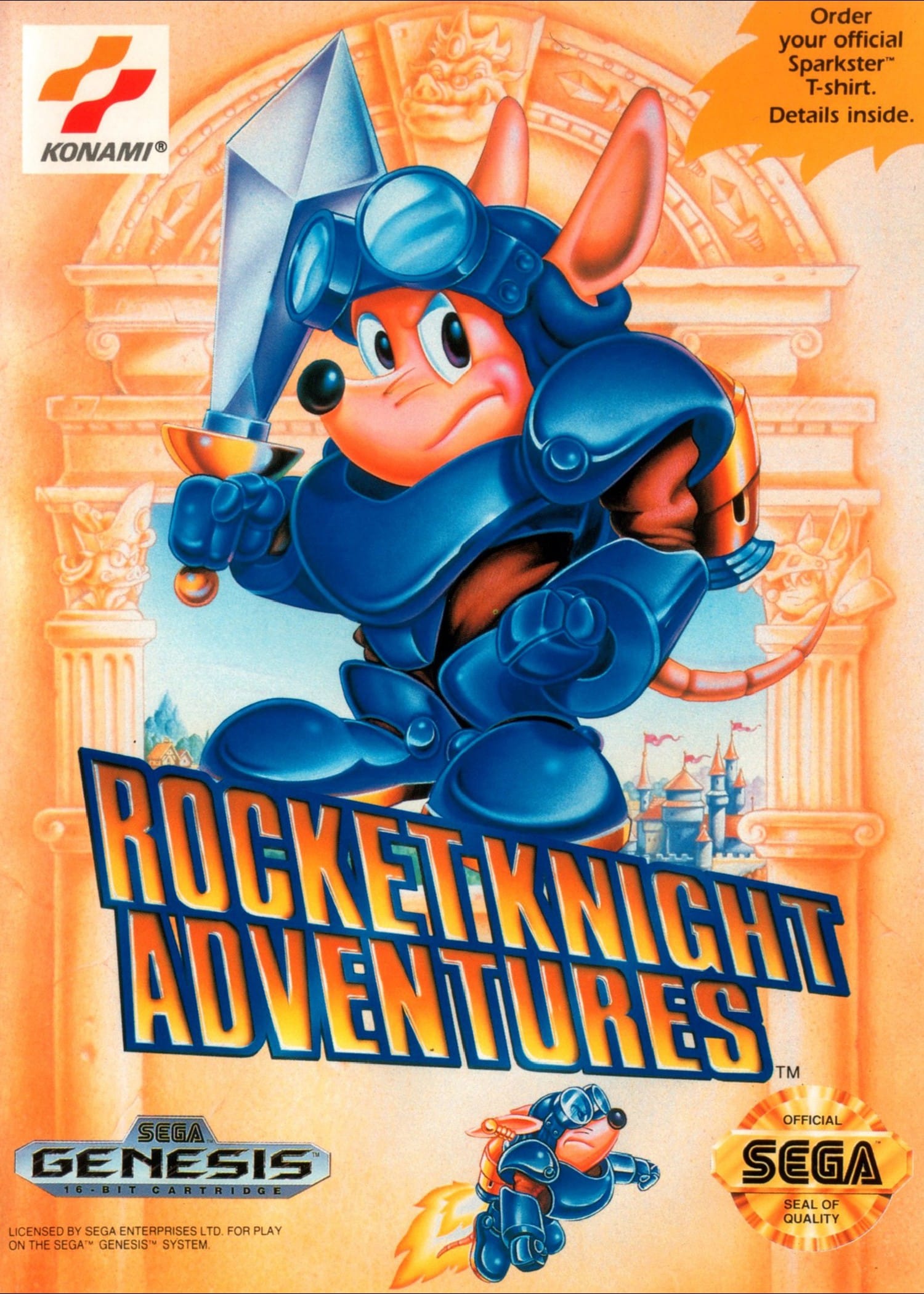
- Developer: Konami
- Release Date: August 5, 1993
Is Rocket Knight Adventures a platformer? A shooter? A character-action game? The answer is a resounding “yes,” and it blends these elements with a confidence that will leave your jaw on the floor. Sparkster’s rocket pack isn’t just for show; it’s your primary weapon. You can launch yourself horizontally across the screen to skewer enemies, ricochet off walls, and solve environmental puzzles. The animation is fluid and full of little details, like the way Sparkster’s ears wiggle when he runs. The soundtrack is an absolute banger, full of heroic, adventurous tunes that get stuck in your head for days. This is peak Konami, oozing charm from every sprite.
Why It's Worth Playing: Rocket Knight Adventures is the whole package. It’s the kind of inventive, polished, and relentlessly entertaining experience that makes digging through classic libraries so rewarding. It doesn't just imitate the trends of its era; it forges its own unique identity with a killer core mechanic and flawless presentation. It’s a cult classic for a reason, and playing it is an instant reminder of why we fell in love with this stuff in the first place.
Dynamite Headdy
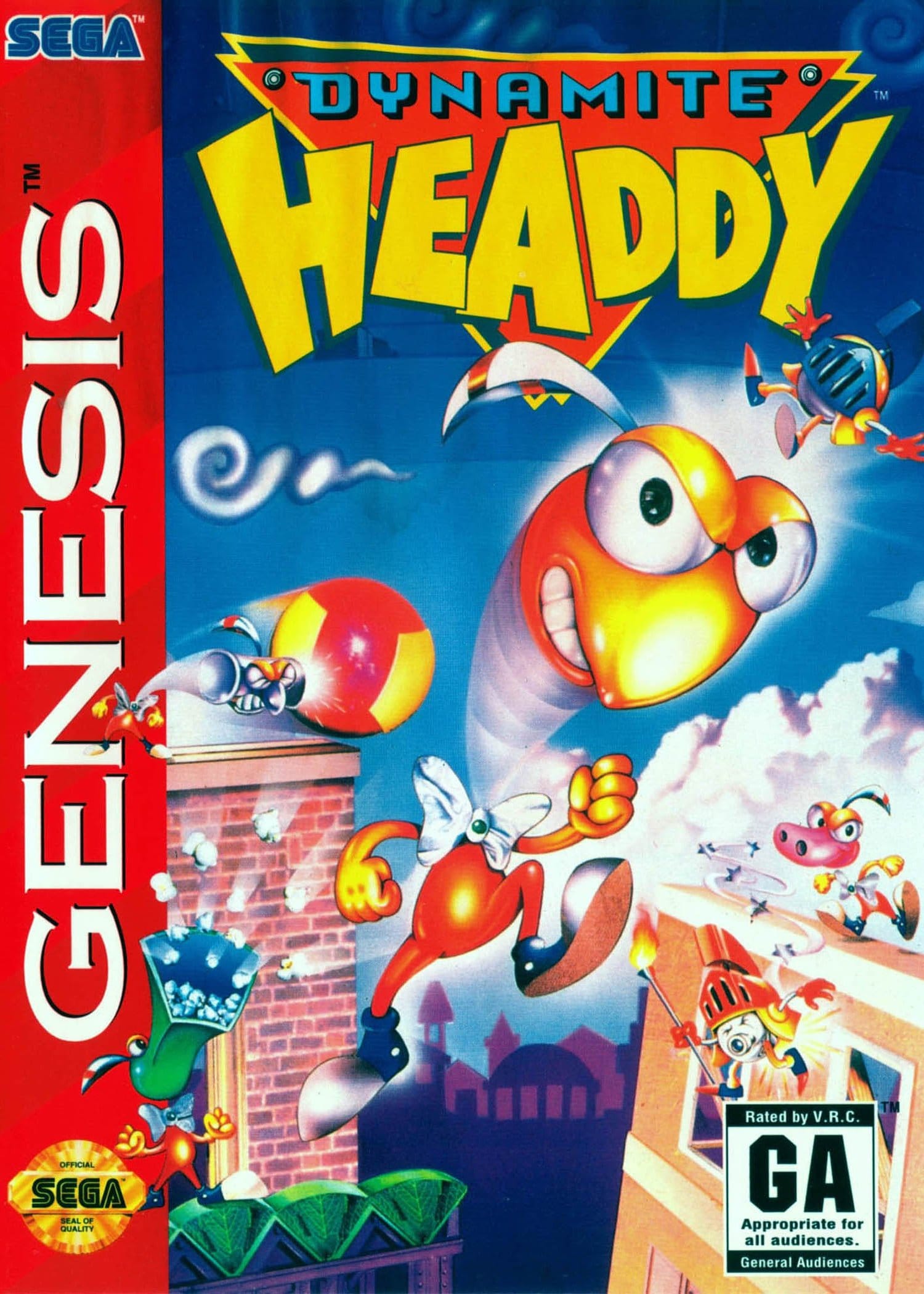
- Developer: Treasure
- Release Date: August 4, 1994
If you thought Rocket Knight was wild, buckle up. Dynamite Headdy is a glorious, unhinged spectacle that feels less like a platformer and more like a playable fever dream. You play as a puppet, battling other puppets on a theatrical stage, and your primary attack involves launching your own head at enemies. Because why not? The game throws more ideas at you in a single level than most games have in their entire runtime, from forced-scrolling shooter sections to a boss fight against a literal, giant baby. The soundtrack is a frantic, upbeat jam that perfectly matches the on-screen insanity. It’s challenging, utterly bizarre, and proof that the Genesis could handle concepts far beyond a simple run-and-jump.
Why It's Worth Playing: Dynamite Headdy is essential playing for anyone who values raw, unfiltered creativity in their games. It's a masterclass in kinetic action and a testament to Treasure's legendary status. While its difficulty and unrelenting weirdness might not be for everyone, those who click with its frenetic wavelength will find one of the most unique, memorable, and brilliantly designed platformers of the 16-bit era. It’s a shot of pure, concentrated imagination.
Kid Chameleon
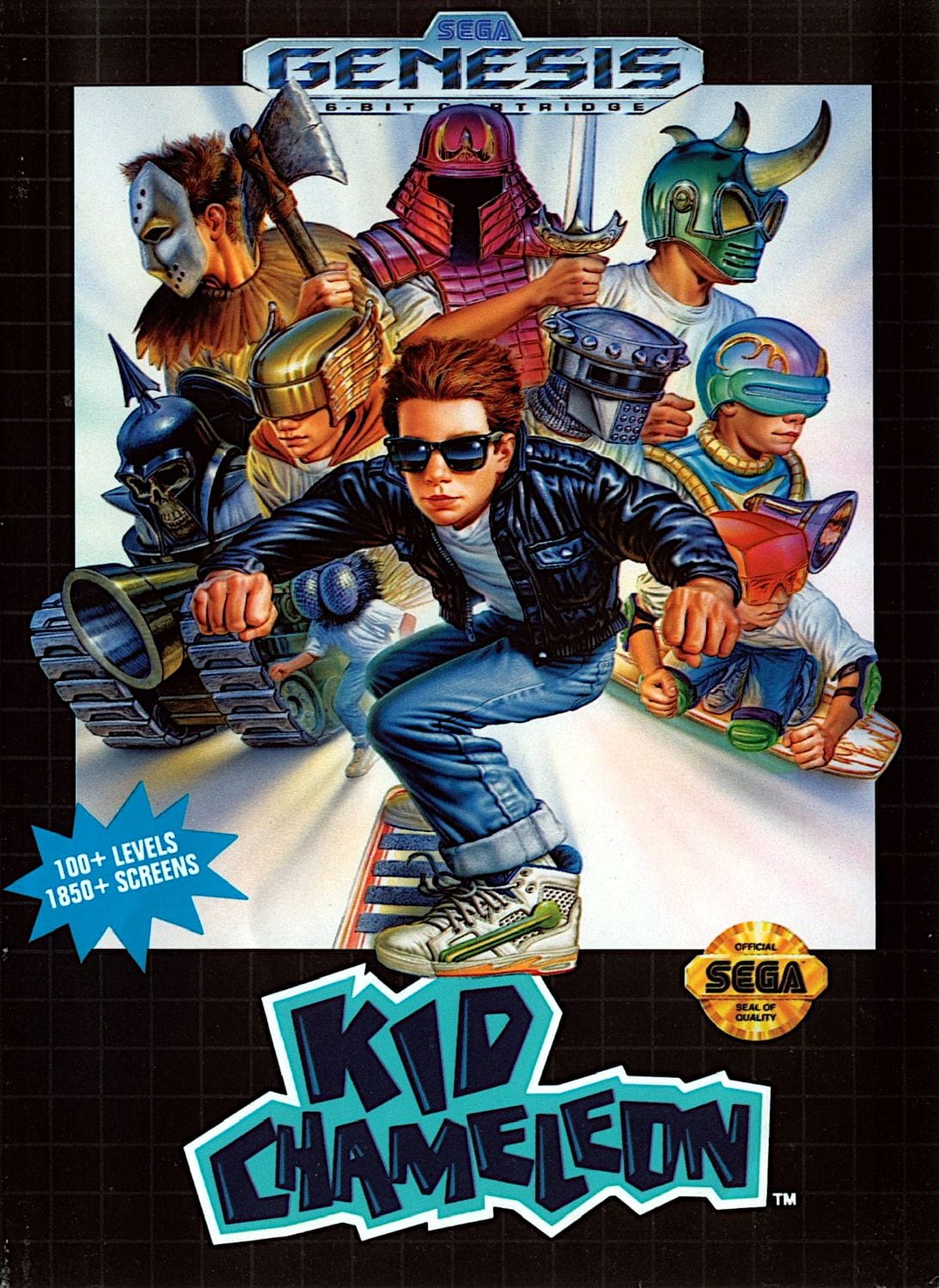
- Developer: Sega
- Release Date: May 28, 1992
Kid Chameleon is a behemoth of a game. We’re talking over 100 levels hidden across a sprawling, non-linear world map. The entire game revolves around its genius power-up system: masks. Finding a helmet doesn’t just make you temporarily stronger; it completely transforms your character and abilities. There are over a dozen of these transformations, and each one opens up new pathways and solutions to the game’s many, many obstacles. The level design is built around this, encouraging—and often requiring—you to backtrack with new powers to find the exit. There is no save feature and no password system, which made conquering this game a badge of honor.
Why It's Worth Playing: Kid Chameleon is a deep, ambitious, and deeply rewarding platformer for those who crave a real project. It throws a massive toolbox at you and lets you figure out how to solve its gigantic puzzle. If you have the patience and perseverance to meet its demands, you'll find one of the most content-rich and inventive platformers the Genesis has to offer. It’s a true cult classic that represents a very specific, hardcore strand of 16-bit game design.
Alex Kidd in the Enchanted Castle
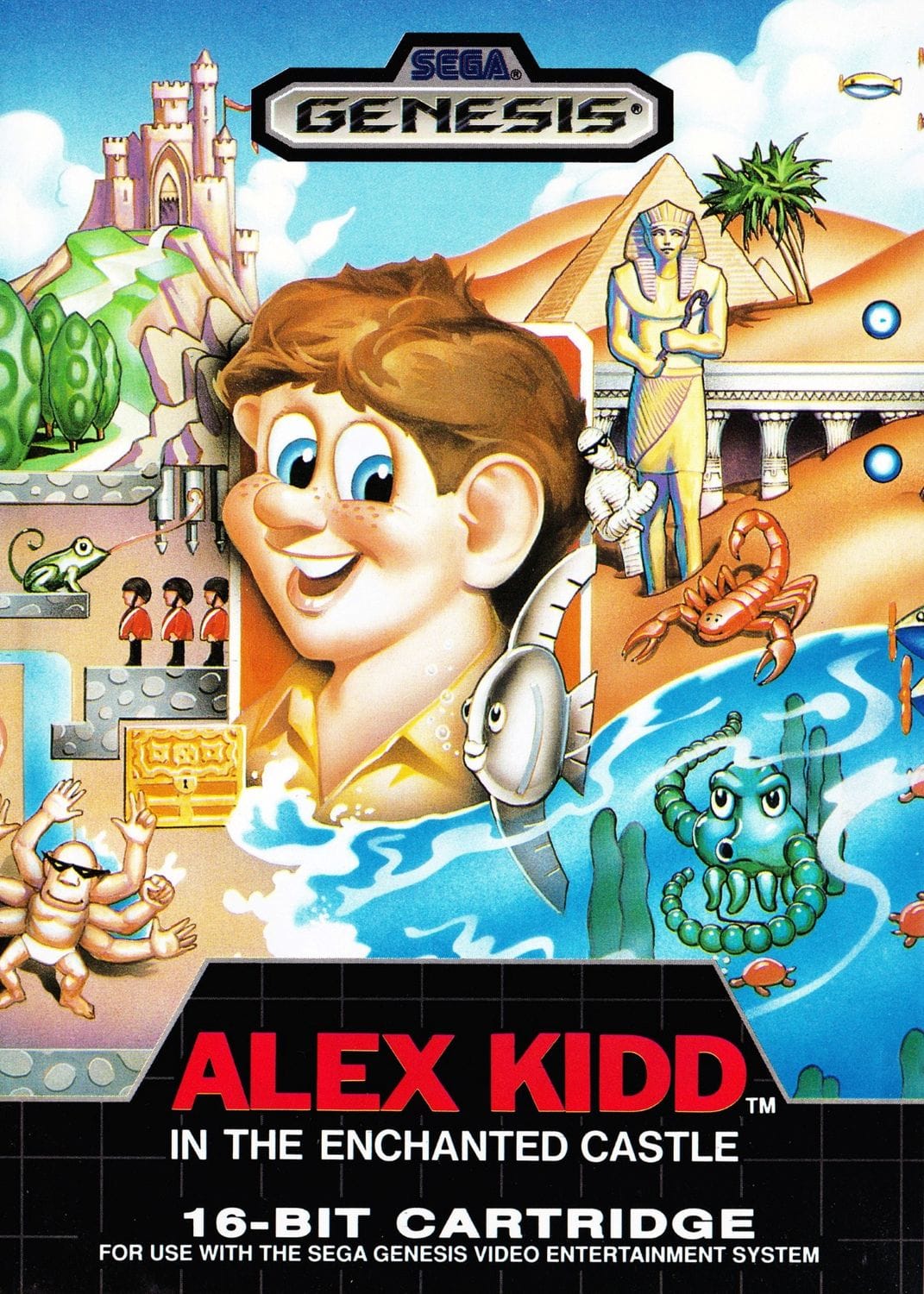
- Developer: Sega
- Release Date: August 14, 1989
Before Sonic was even a glimmer in a developer’s eye, Sega had another mascot: Alex Kidd. The gameplay is deceptively simple. You punch your way through enemies, break blocks to find money for power-ups, and navigate some truly unforgiving level design. What really sells the experience is the sheer personality. From the iconic, jangly soundtrack to the weirdly specific vehicle sections where you pilot a motorbike or a pogo stick, Alex Kidd in the Enchanted Castle is unapologetically itself. It doesn’t feel focus-tested; it feels like a raw, creative, and slightly janky experiment.
Why It's Worth Playing: Playing Alex Kidd today is less about mastering a tight platformer and more about understanding the quirky, rough-around-the-edges foundation that the Blue Blur was meant to polish and surpass. It’s challenging, weird, and full of character. For any fan of gaming history, it’s an essential, if occasionally painful, pilgrimage.
QuackShot Starring Donald Duck

- Developer: Disney Interactive Studios
- Release Date: December 19, 1991
QuackShot gives us a Donald Duck reborn as a globe-trotting, Indiana Jones-style adventurer, and it is an absolute triumph. Donald’s primary tool, a plunger gun, starts as a simple weapon to stun enemies, but it quickly becomes the key to exploration. You use it to hit switches, activate platforms, and grapple onto specific blocks to reach higher areas. Later, you upgrade to popcorn that bounces enemies around and hot sauce that acts as a freaking flamethrower. The animation is pure, classic Disney, with Donald’s signature waddle and temper tantrums rendered perfectly. This isn’t just a good licensed game; it’s a masterclass in the adventure-platformer hybrid genre.
Why It's Worth Playing: QuackShot is a brilliantly designed, wonderfully charming adventure that stands the test of time. It proves that with the right care and a creative concept, a licensed game can become a timeless classic. The exploration is rewarding, the pacing is perfect, and the character is at his all-time best. If you have even a passing interest in Disney or clever platformers, this is an unmissable entry in the Genesis library. It’s a treasure, plain and simple.
Disney’s Aladdin
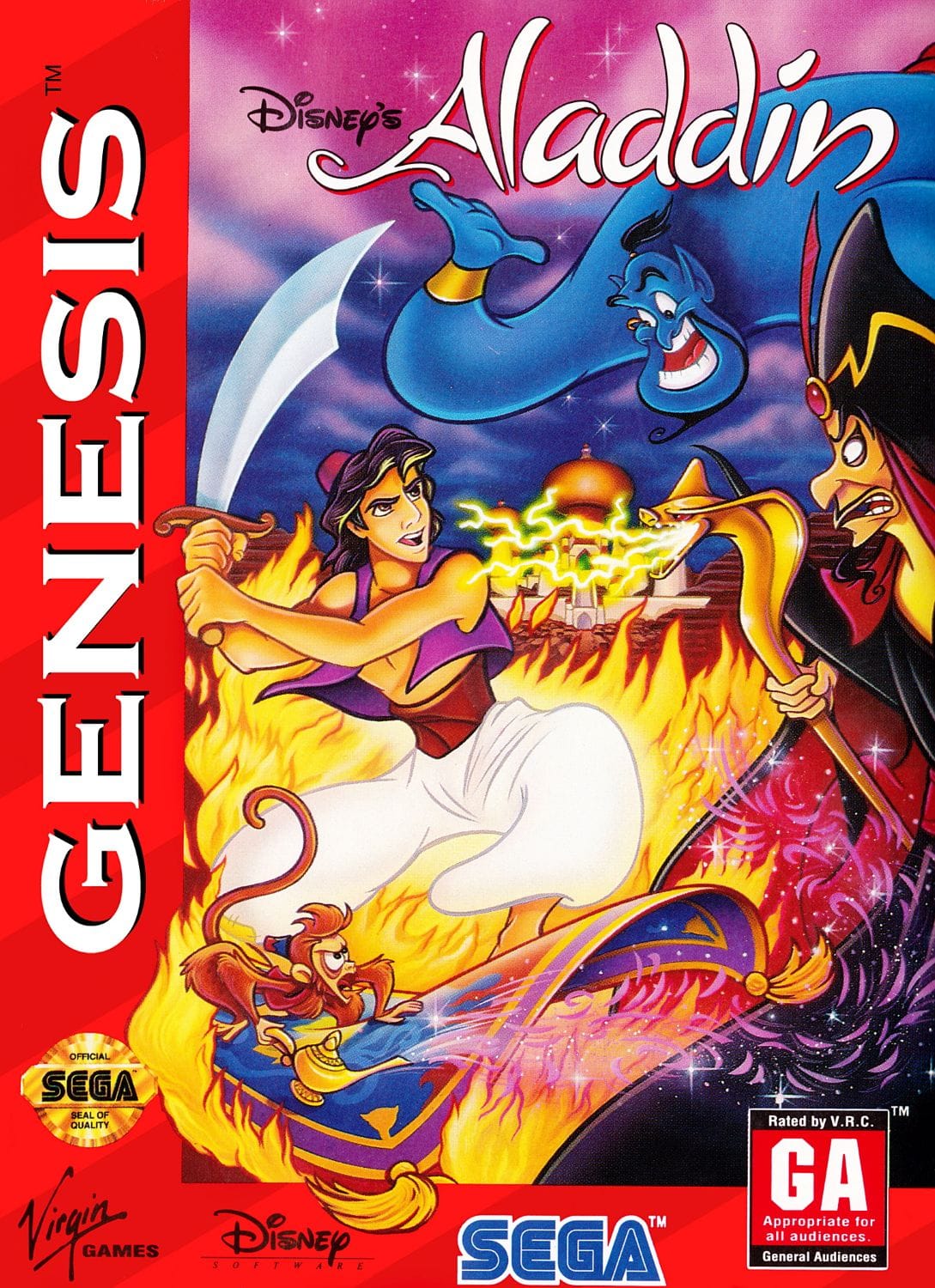
- Developer: Virgin Interactive
- Release Date: November 11, 1993
Let’s settle the Great 16-Bit Aladdin Debate. While the SNES version had him bouncing on heads, the Genesis version had our boy Aladdin parrying, slashing, and deflecting arrows with a sword. It immediately establishes a different tone, and the combat has a tangible, satisfying clang to it that just feels right. But let’s be clear, the appeal isn’t just weapon-based. Virgin brought in actual Disney animators, and it shows in every single frame. Aladdin’s movements are fluid and full of personality, whether he’s casually vaulting over a ledge or desperately clinging to a carpet. It’s a complete package that captures the film’s charm while standing firmly on its own as a stellar game.
Why It's Worth Playing: The Genesis version of Aladdin doesn’t just re-tell the movie; it translates its energy and aesthetic into a fantastically playable action-platformer. The combination of gorgeous, hand-drawn animation, tight controls, and satisfying combat creates an experience that is both a visual treat and a genuinely great game. It’s a crown jewel of the Genesis library and a definitive argument for why this console was a powerhouse for Disney games.
Castle of Illusion Starring Mickey Mouse
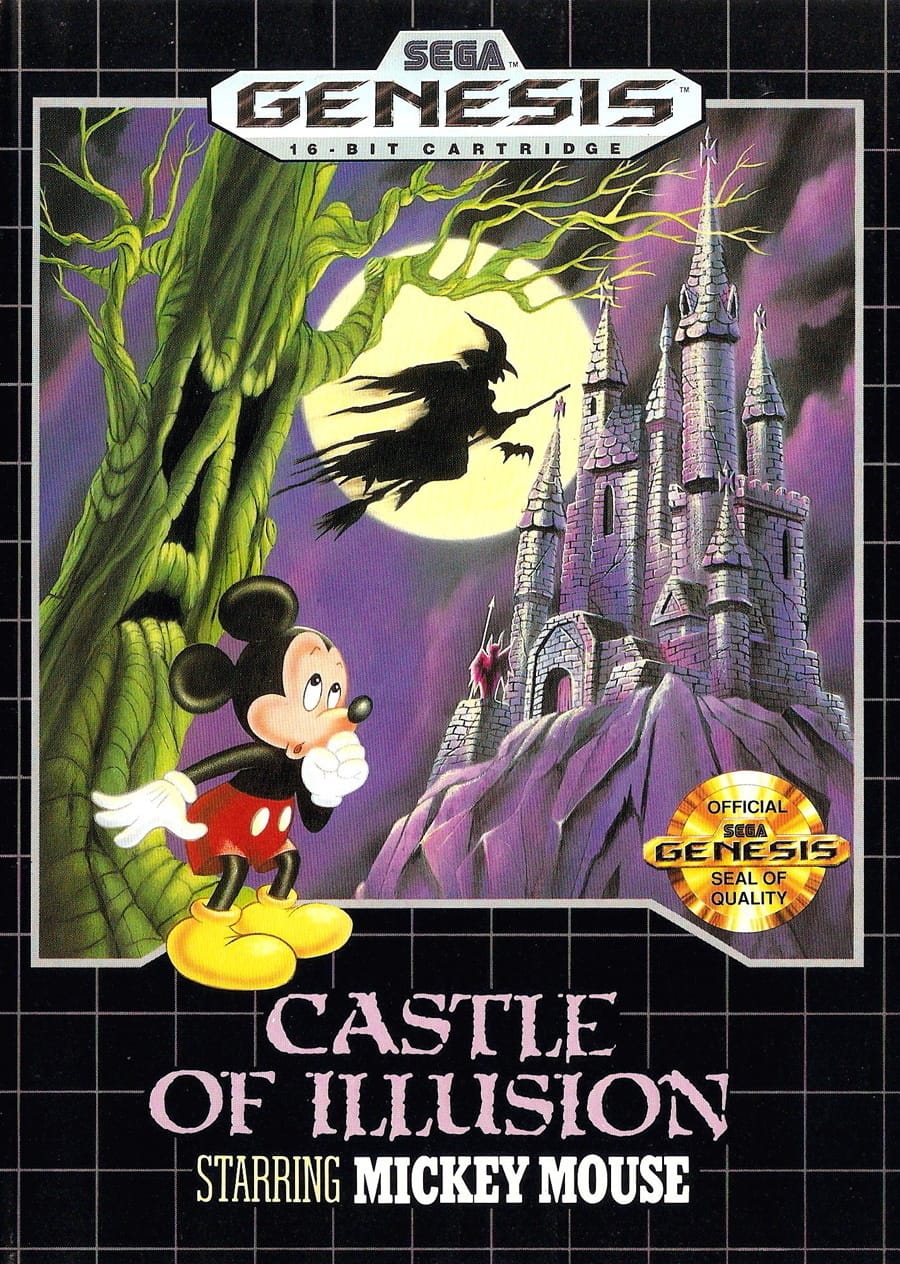
- Developer: Sega
- Release Date: November 21, 1990
Castle of Illusion wasn’t just a Mickey Mouse game; it was a statement that their console could deliver a polished experience that could go toe-to-toe with anything on the market. The gameplay is beautifully straightforward and tight. Each world is a twisted take on a classic theme—a toy box come to life, a forest made of candy, a castle of living playing cards. These aren’t just static backgrounds; they are interactive playgrounds. You’ll bounce on giant marshmallows, ride floating bubbles, and navigate bookshelves that rearrange themselves. It’s not a long or brutally difficult game, but every moment is so perfectly crafted that you don’t care. It’s a concentrated dose of joy.
Why It's Worth Playing: Castle of Illusion is a masterpiece of streamlined platforming. It proves that a game doesn't need a complex moveset or a massive world to be unforgettable. This is essential gaming, a title that transcends its license to become one of the finest platformers on the system, period. It’s a short, sweet, and absolutely magical experience that every Genesis owner should play.
The Lion King

- Developer: Westwood Studios
- Release Date: November 4, 1994
Let’s not mince words here: The Lion King was so infamously difficult that it broke the spirit of many ’90s kids who rented the game from Blockbuster. So why do we remember it so fondly? Because beneath the punishing difficulty is an incredibly ambitious and lovingly crafted game. The animation is fluid and cinematic, the soundtrack features fantastic Genesis renditions of the movie’s songs, and the art direction is simply sublime. Conquering The Lion King wasn’t just about finishing a game; it was the video game equivalent of earning your place on Pride Rock.
Why It's Worth Playing: While its difficulty curve is undeniably steep, The Lion King was a masterpiece of presentation and a faithful adaptation of its source material. If you can endure the struggle, you'll find one of the most visually stunning and memorable licensed games of all time. It's a true trial by fire, and emerging victorious is a roar-worthy moment.
Mickey Mania: The Timeless Adventures of Mickey Mouse
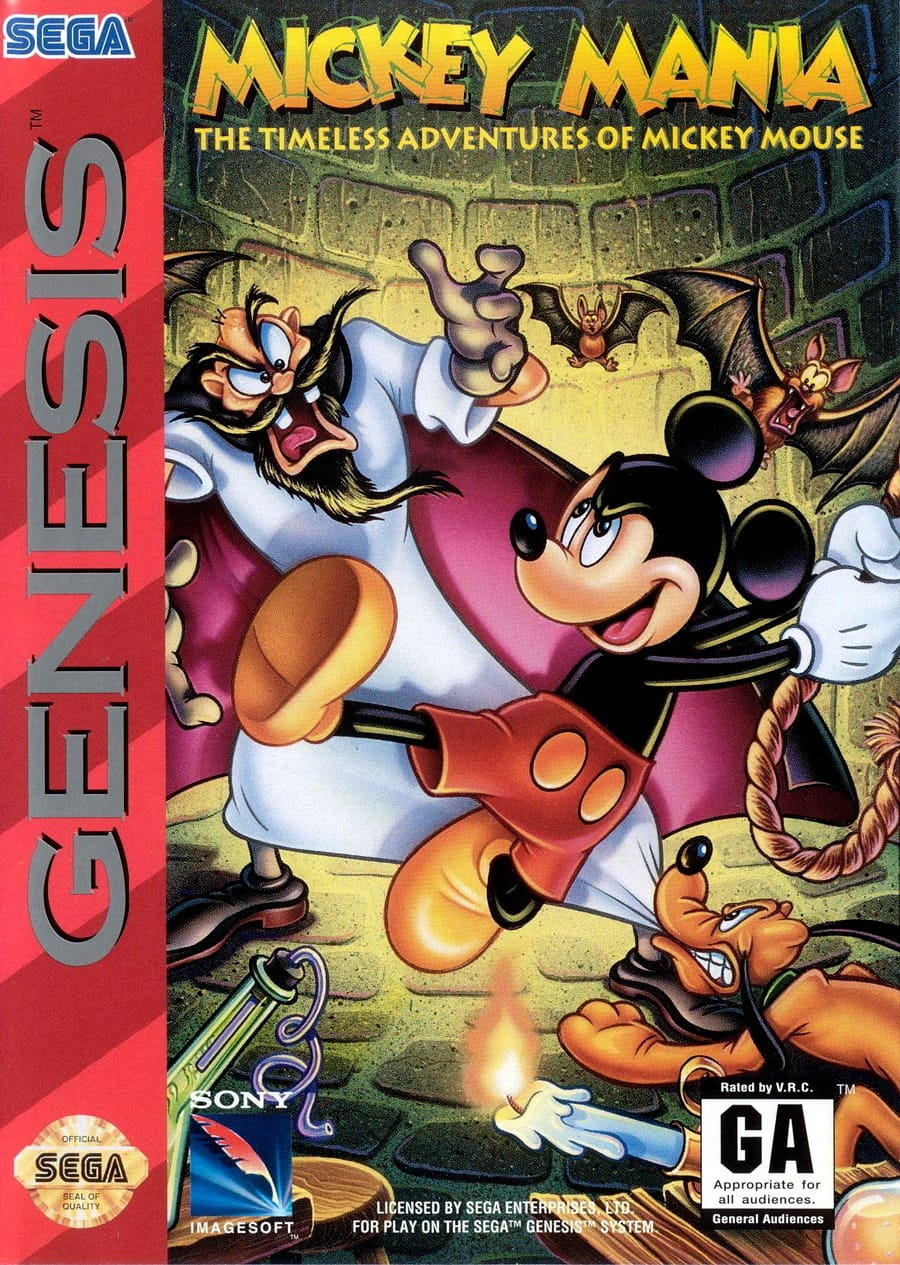
- Developer: Traveller’s Tales
- Release Date: November 1, 1994
Mickey Mania pitches itself as a living museum of Mickey Mouse’s career, and it absolutely delivers on that promise. The game immediately grabs you with a black-and-white intro straight out of Steamboat Willie, and from there, you’re off through The Mad Doctor, Moose Hunters, and even The Prince and the Pauper. Mickey can jump and throw projectiles, but the challenge often comes from the environment itself. Precise timing is key, especially during the frantic chase sequences. The developers used digitized background art from the original cartoons, giving the game a uniquely authentic and detailed look that stands apart from other Disney titles on the system.
Why It's Worth Playing: Mickey Mania is a visually stunning tribute that faithfully recreates the look and feel of classic Mickey Mouse cartoons. While the gameplay can be challenging to a fault, the incredible art direction, inventive levels, and sheer novelty of the experience make it an essential play for any Disney or animation fan. It’s less a test of pure platforming skill and more a ride through a beautifully preserved archive of Mickey's greatest hits.
Tiny Toon Adventures: Buster’s Hidden Treasure

- Developer: Konami
- Release Date: March 1993
Tiny Toon Adventures: Buster’s Hidden Treasure oozed the same kind of polish and creativity that Konami poured into titles like Rocket Knight Adventures. The game lets you choose from Buster Bunny, Plucky Duck, Dizzy Devil, and Furrball, who have unique abilities that genuinely change how you approach levels. The levels themselves are massive, colorful, and full of secret warp zones and alternate paths. The animation is fluid and packed with personality, perfectly capturing the zany spirit of the show. The game has a perfect difficulty curve, too—it never feels cheap, just consistently fun and inventive from start to finish.
Why It's Worth Playing: Tiny Toon Adventures is a hidden gem that showcases Konami at the top of their game. It takes a beloved license and elevates it into a top-tier platforming experience with smart character-specific mechanics, excellent level design, and presentation that pops. If you skipped this one because it looked like a "kiddie game," you've been missing out on one of the most polished and enjoyable co-op platformers the Genesis has to offer. It’s a pure, undiluted dose of 16-bit joy.
Wonder Boy in Monster World
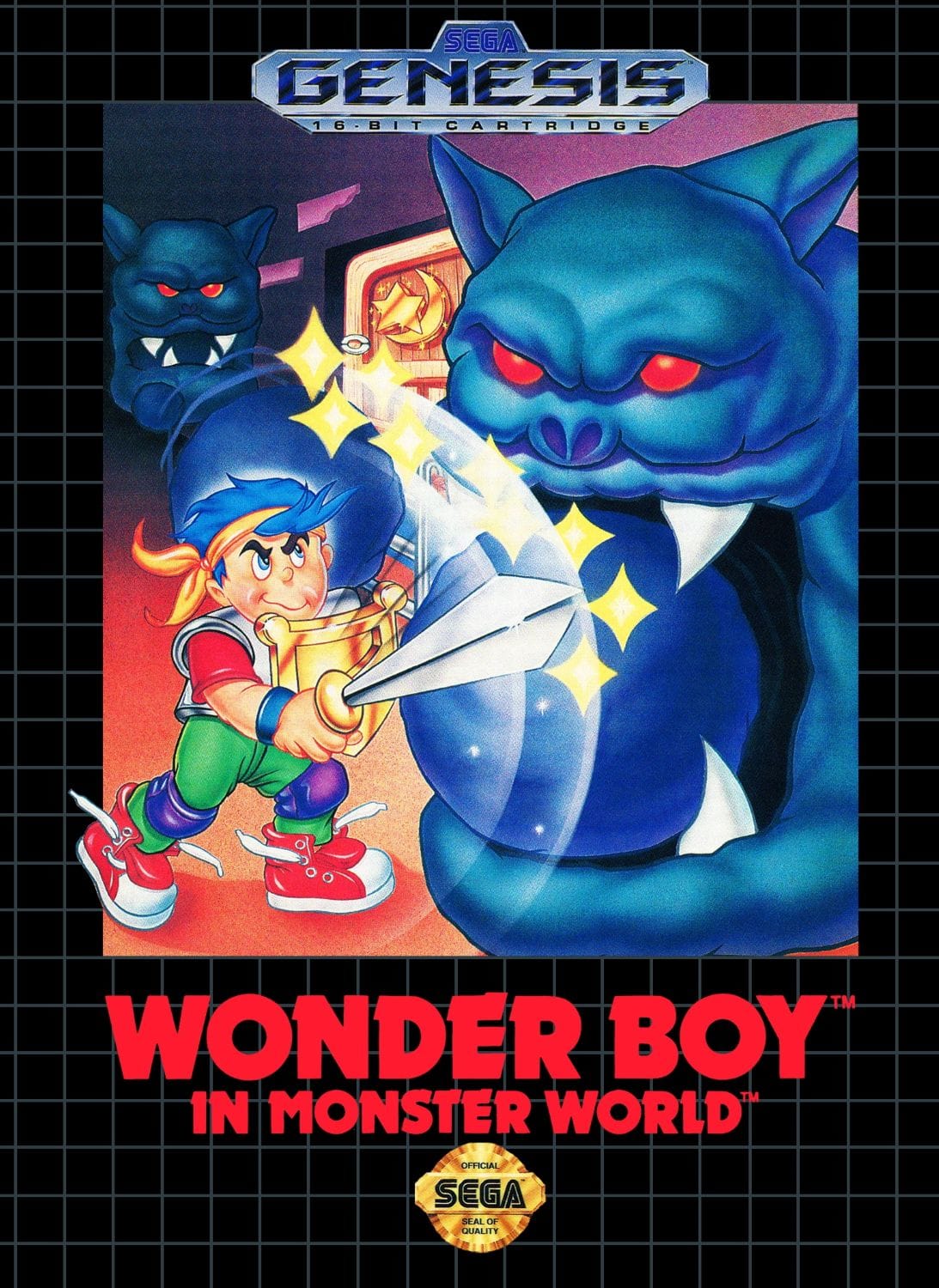
- Developer: Westone
- Release Date: October 25, 1991
Wonder Boy in Monster World is the perfect fusion of tight platforming action and a sprawling, exploratory adventure. You play as Shion, a young warrior who arrives in Monster World, and explore towns, talk to quirky NPCs who give you hints (or send you on errands), and dive into dungeons filled with enemies and environmental puzzles. The presentation is charmingly rustic. The character sprites are small but full of personality, and the world is colorful and inviting. The soundtrack is a delightful, melodic companion on your journey, with tunes that perfectly capture the mood of each new area you discover.
Why It's Worth Playing: Wonder Boy in Monster World is an essential play for anyone who loves the "Metroidvania" genre. It’s a foundational title that expertly blends action-platforming with light RPG elements and a heavy emphasis on non-linear exploration. The pacing is perfect, the upgrades are meaningful, and the world is a joy to uncover piece by piece. It’s a thoughtful, engaging, and deeply rewarding experience that stands as one of the Genesis's most timeless adventures.
Puggsy
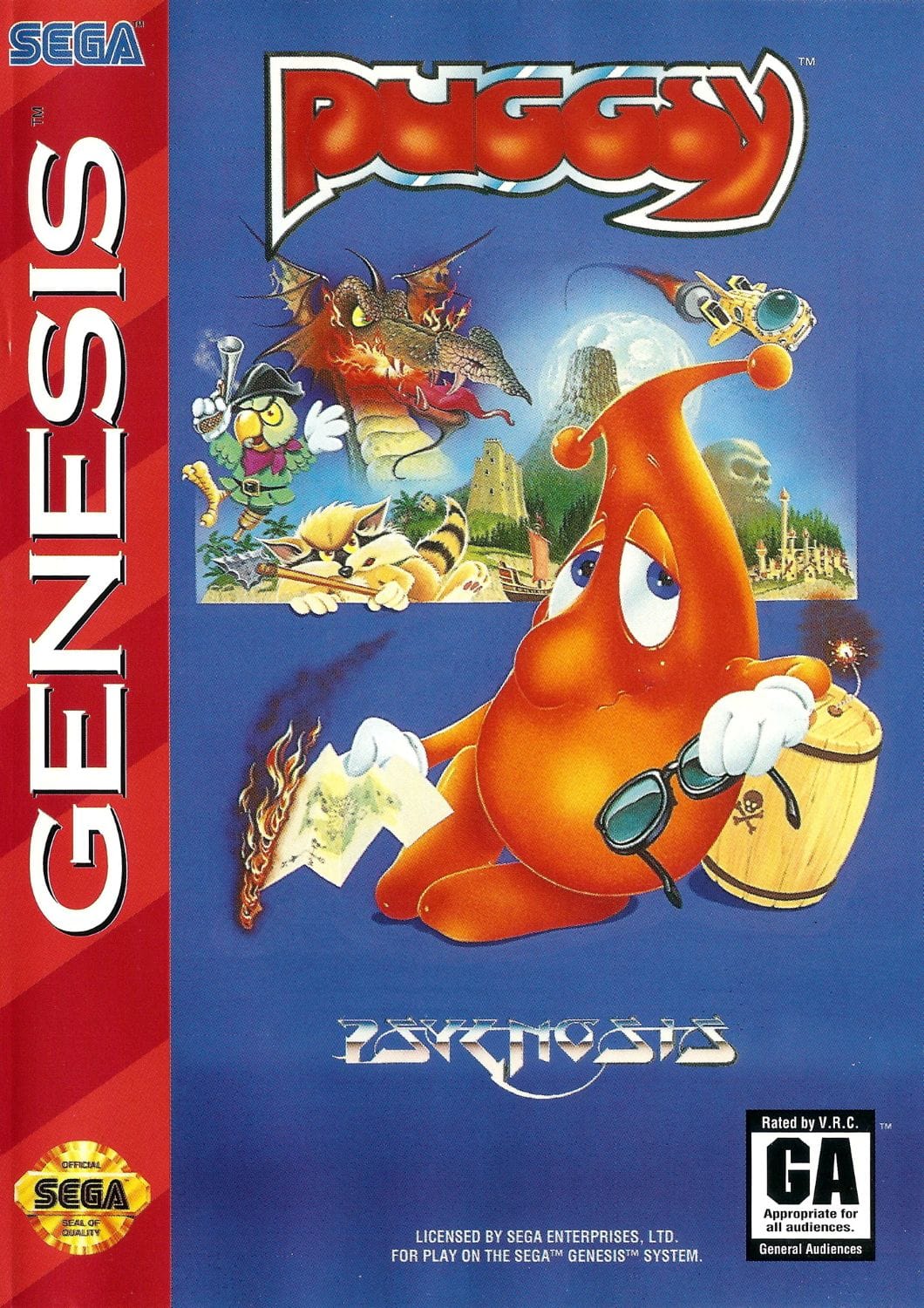
- Developer: Psygnosis
- Release Date: October 1993
Ever wonder what would happen if a platformer had a serious physics engine? Meet Puggsy. This is a puzzle-platformer where you’ll find yourself picking up blocks, barrels, and all sorts of odd items, then stacking them, throwing them onto switches, or using them as stepping stones. Visually, it has a distinct, colorful style that feels very European, with large, detailed sprites and vibrant backgrounds. Puggsy himself is adorably expressive, and the game’s quiet, atmospheric soundtrack complements the thoughtful gameplay perfectly. It’s a unique and often overlooked title that offers a completely different kind of challenge compared to the action-heavy platformers that dominated the era.
Why It's Worth Playing: Puggsy is a slow-burn, physics-based puzzle game disguised as a platformer, and it executes its concept with remarkable polish. If you're tired of reflex-based challenges and crave a game that makes you stop and think, this is an absolute hidden gem. Its clever, object-based puzzles and distinctive feel make it a memorable and deeply satisfying experience for anyone seeking something different in their Genesis library.
Taz-Mania
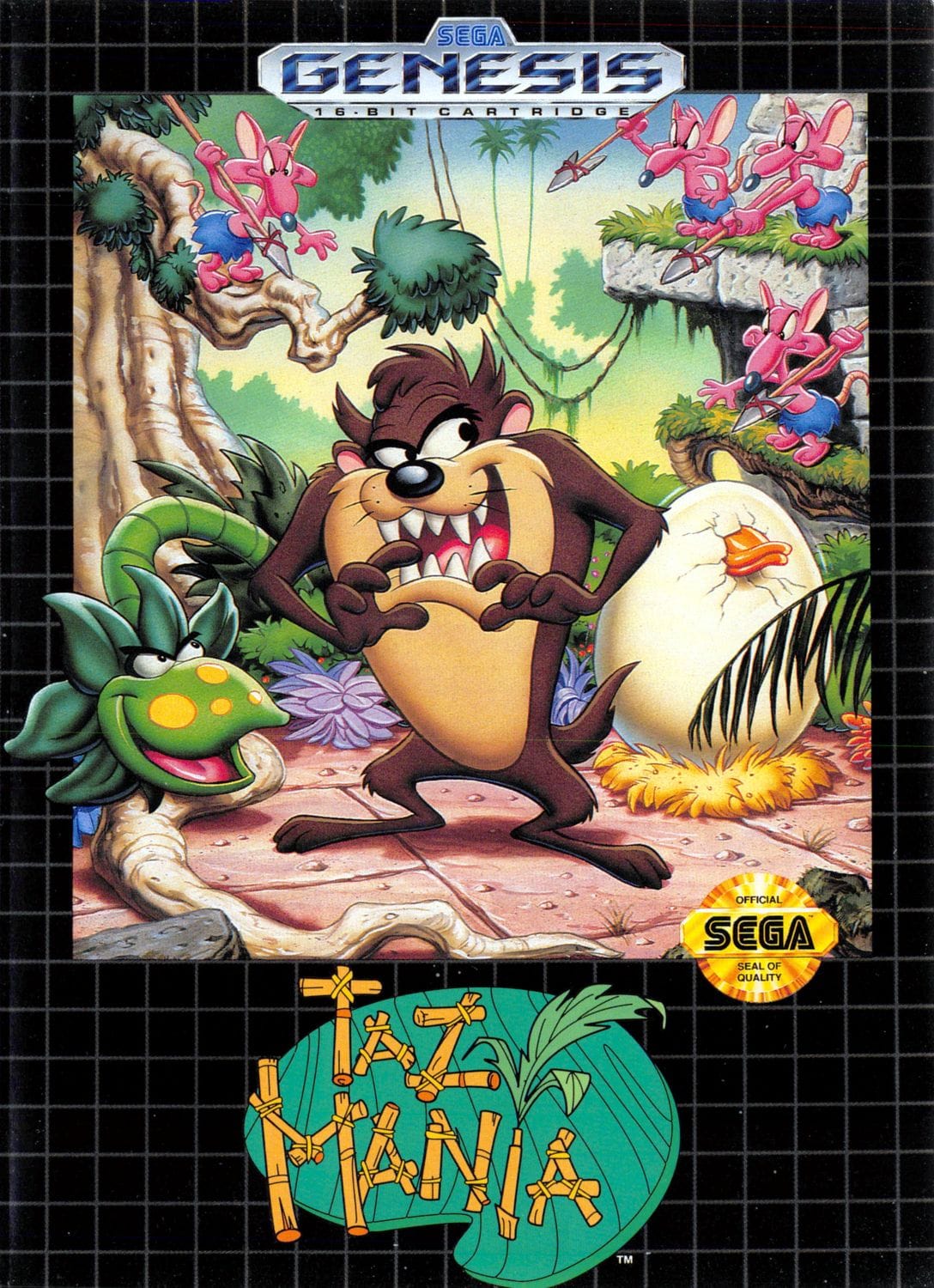
- Developer: Recreational Brainware
- Release Date: July 1992
Based on the zany 1990s cartoon, Taz-Mania somehow manages to bottle the chaotic energy of the Tasmanian Devil and turn it into a surprisingly competent platformer. Your spin attack is your primary tool for everything. You can use it to defeat enemies, obviously, but also to break through certain walls, cross large gaps by creating a temporary tornado, and even to float gently downwards. The animation is great, with Taz shuffling along with that trademark goofy gait. Is it a deep, complex masterpiece? Nah. But it’s a blast. It’s simple, satisfying, and knows exactly what it is.
Why It's Worth Playing: Taz-Mania is a perfect, pick-up-and-play title for when you just want to tear through a few levels as a force of pure, unadulterated chaos. It successfully translates a cartoon character's entire schtick into a solid, enjoyable gameplay loop. If you're in the mood for a platformer that doesn't take itself too seriously and lets you wreck everything in your path, this is your ticket.
Chiki Chiki Boys
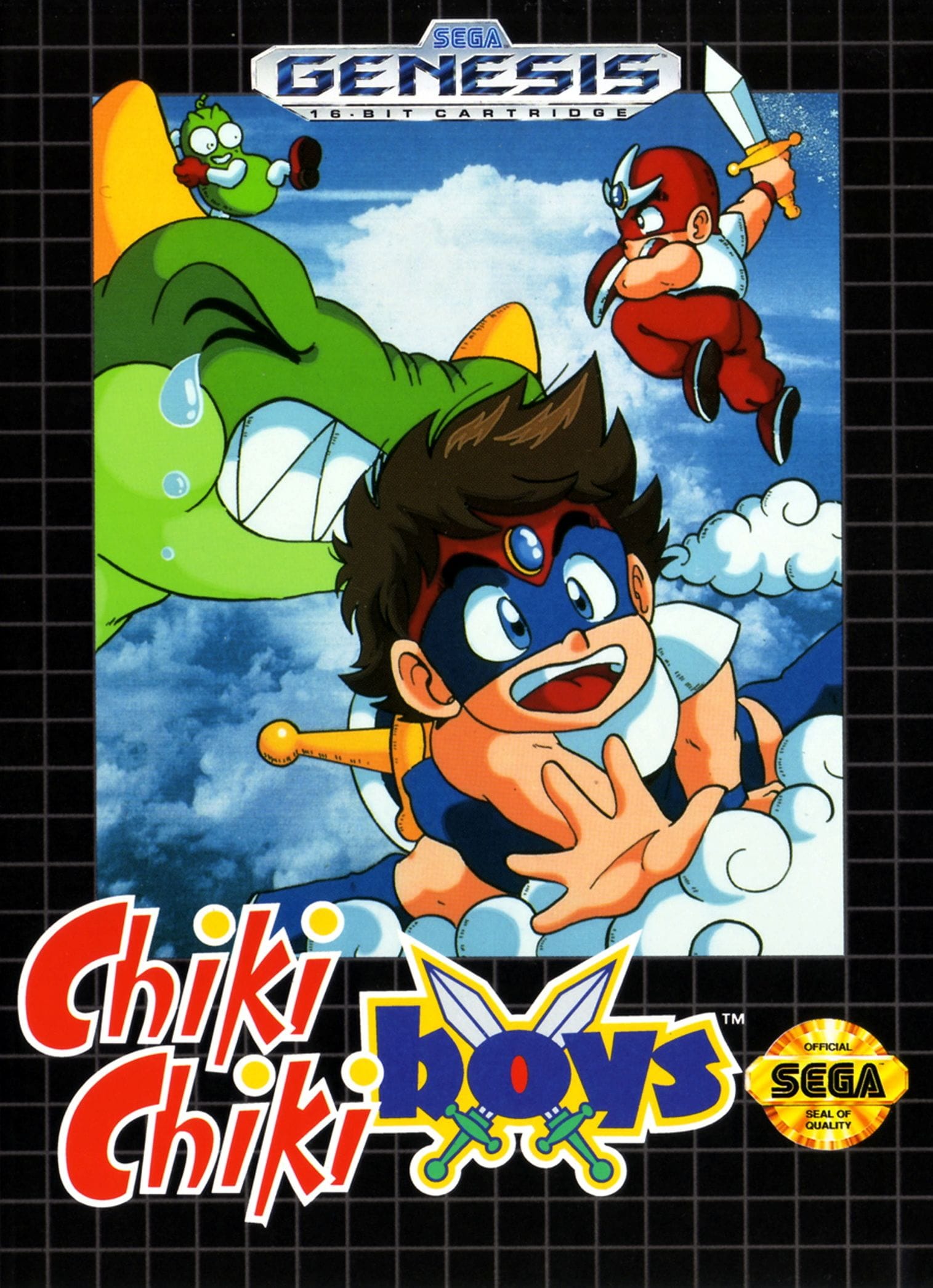
- Developer: Capcom
- Release Year: 1990
If you’re a sucker for bright, cheerful, and incredibly polished arcade-style platformers, you need to know about Chiki Chiki Boys. The art style is vibrant and colorful, with some of the most charming sprite work on the system. The characters are small and detailed, the enemies are goofy and imaginative, and the levels are a delightful tour through fantasy staples like forests, ice caves, and castles. The co-op mode is where the game truly shines, as you and a friend can slash your way through the hordes of adorable enemies together. It’s not a long or difficult game, but its short length is part of its charm—it’s a perfectly crafted, bite-sized delight.
Why It's Worth Playing: Chiki Chiki Boys absolutely oozes that classic, late-80s/early-90s Capcom quality. In a library filled with 'tude and speed, this game is a return to pure, innocent, and incredibly well-made fun. The co-op is a blast, the presentation is gorgeous, and the entire experience is just relentlessly cheerful. It’s a hidden gem that proves sometimes, all you need is a good sword, a cute aesthetic, and a friend to share it with.
Sparkster: Rocket Knight Adventures 2
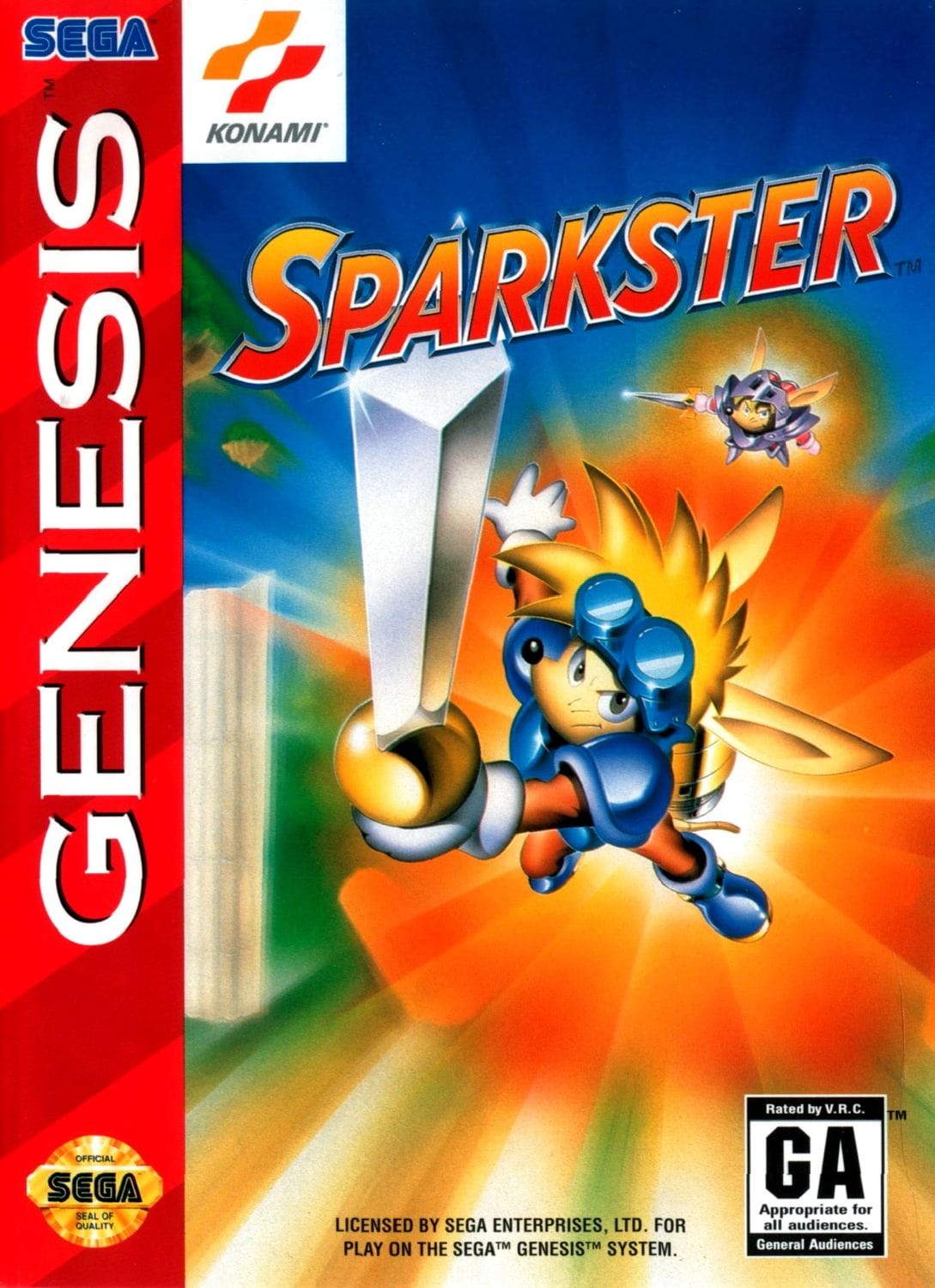
- Developer: Konami
- Release Date: September 23, 1994
Sparkster: Rocket Knight Adventures 2 is a unique adventure built from the ground up that leans even harder into the rocket-boosting action that made the original so great. The level design in this sequel is practically built around aerial mobility. The game introduces new mechanics, like a super-powered “Super Rocket” attack and the ability to cling to certain walls with your sword, adding more tools to your arsenal. And true to Konami form, the presentation is top-tier. The graphics are a step up from Rocket Knight Adventures, with more detailed backgrounds and larger, more impressive boss sprites. The soundtrack is another absolute banger, full of high-energy, adventurous tunes that keep the intensity high.
Why It's Worth Playing: Sparkster on Genesis is a fantastic sequel that refines the core concept into a pure action spectacle. While it sacrifices some of the variety of the original Rocket Knight Adventures, it delivers a more concentrated and skill-based experience centered entirely on rocket-pack mastery. It's a visually impressive, sonically thrilling, and brilliantly designed action-platformer that stands as a worthy, if different, follow-up. For fans of challenging, momentum-based gameplay, this is an essential deep cut.
James Pond 3: Operation Starfish

- Developer: Vectordean
- Release Year: 1993
James Pond 3: Operation Starfish takes the series’ signature British quirk and turns it into an utterly bizarre adventure that feels like a psychedelic trip through a cartoon ocean. You play as the titular secret agent fish, and your main new ability? You can stretch vertically. Like, really, really high. The stretching mechanic is used for everything: reaching high platforms, solving environmental puzzles, and even as a makeshift ladder. The level design is ambitious and often confusing, encouraging exploration and experimentation. The humor is relentlessly pun-filled and silly, the visual style is a chaotic mess of colors and ideas, and the whole package feels like it shouldn’t exist. And yet, it does.
Why It's Worth Playing: James Pond 3 is a fascinating and ambitious experiment that is unlike anything else on the Genesis. If you have a soft spot for eccentric, European-developed curiosities that defy convention, this is a treasure trove of bizarre ideas. It’s a glorious mess, and sometimes, that’s exactly what you’re looking for.
Flink
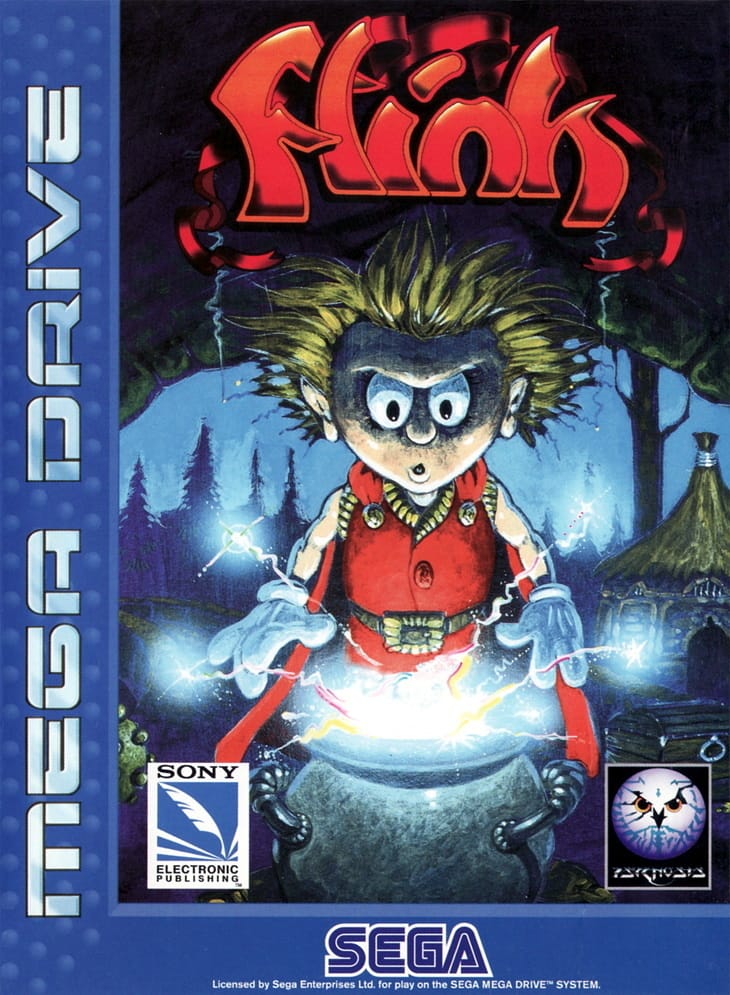
- Developer: Psygnosis
- Release Date: November 1994
Flink is one of the most visually distinct and artistically ambitious platformers on the Genesis. The visual style is moody and detailed, with a color palette that leans into earthy tones and spooky shadows. The character and enemy designs are incredibly imaginative, dripping with a kind of European folk-art charm that sets it completely apart from the bright, anime-inspired styles of its contemporaries. Gameplay-wise, it’s a solid action-platformer with a nice variety. It’s not the most difficult game, but it’s a consistently engaging and atmospheric journey.
Why It's Worth Playing: Flink is worth hunting down as a testament to the artistic potential of the 16-bit era. It’s a beautifully crafted, dark fantasy adventure that offers a unique vibe you simply can't find anywhere else in the Genesis library. For anyone tired of the same old aesthetics and looking for a platformer with a rich, storybook atmosphere, this is an unparalleled hidden gem.
Desert Demolition
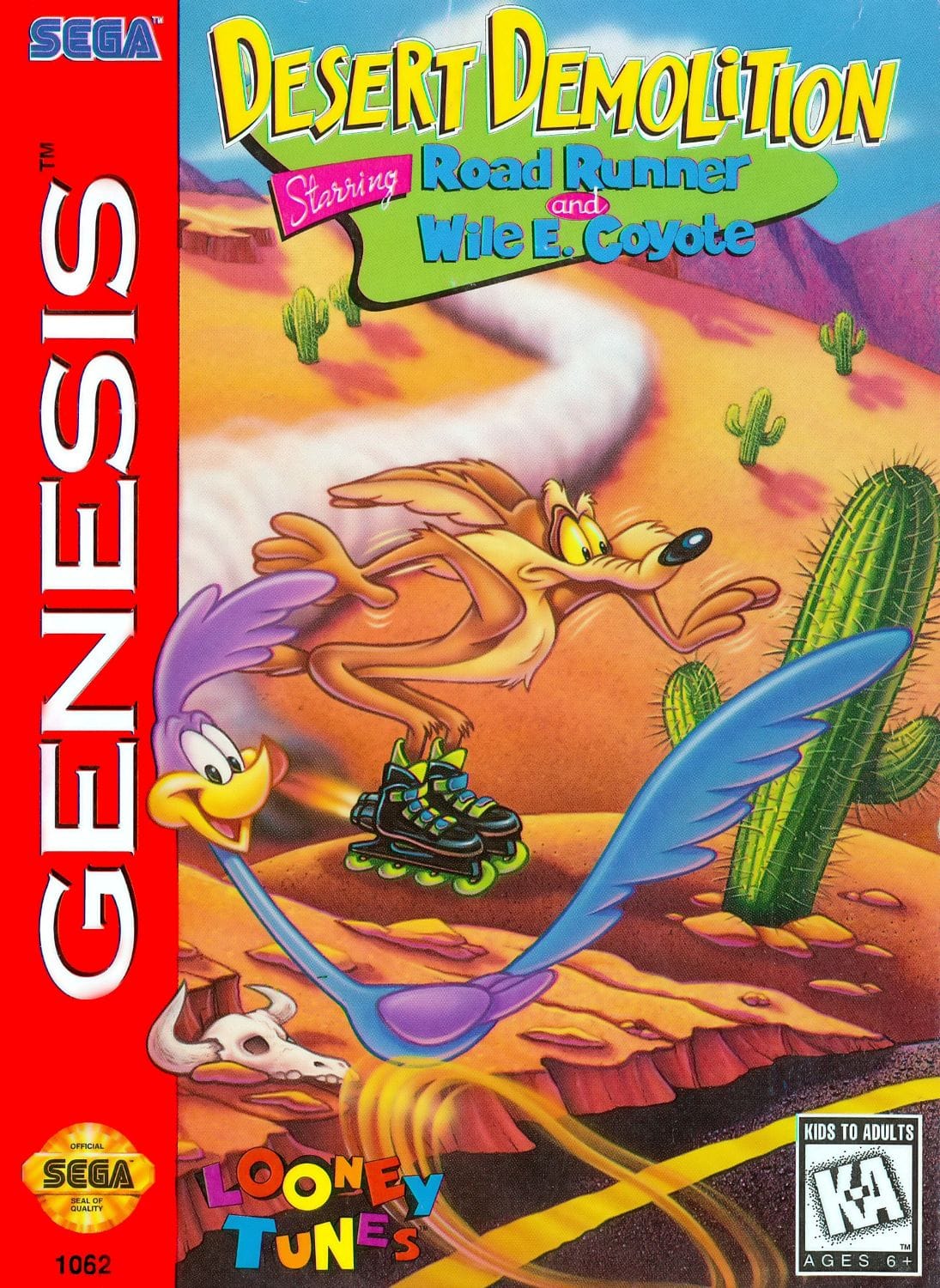
- Developer: BlueSky Software
- Release Date: February 1995
Desert Demolition throws Wile E. Coyote and the Road Runner into a platformer that’s part race, part brawler, and all chaotic fun. If you play as the Coyote, you’re using Acme gadgets like spring shoes and bombs to navigate and attack. As the Road Runner, you’re a speed demon, relying on quick dashes and agile jumps. The real charm happens when you catch up to your rival; the game switches to a one-on-one boss fight where you duke it out in a small arena. These moments are pure, chaotic slapstick, and nailing the Coyote with a well-timed anvil purchase is endlessly satisfying. The levels are packed with shortcuts, traps, and alternate routes, making each run feel different.
Why It's Worth Playing: Desert Demolition is worth playing because it’s pure, unadulterated fun. It’s a fantastic pick-up-and-play title with great co-op/competitive potential. The presentation is top-tier, the core racing-and-fighting loop is addictive, and it’s one of the best Looney Tunes adaptations ever made. If you’re in the mood for a platformer that doesn’t take itself seriously and just delivers 30 minutes of high-energy chaos, this is an absolute gem.
Sylvester and Tweety in Cagey Capers

- Developer: Alexandria
- Release Date: August 1994
Cagey Capers casts you as Sylvester, on a mission to finally catch that pesky Tweety Bird, and it plays out like a stealth-puzzle platformer. The goal in each stage isn’t to defeat enemies; it’s to navigate the environment, avoid the ever-watchful eye of Hector the Bulldog, and snatch Tweety’s cage without getting caught. You have to learn the patterns of the household inhabitants and strike when the moment is right, which perfectly captures the cat-and-mouse (or cat-and-canary) dynamic of the classic cartoons. The visuals are bright and colorful, with large, well-animated sprites that look just like their animated counterparts.
Why It's Worth Playing: Sylvester and Tweety in Cagey Capers is a delightful change of pace that faithfully translates the humor and structure of a Sylvester and Tweety cartoon into an interactive form. If you're looking for a platformer that emphasizes brains over brawn and delivers a heavy dose of nostalgic charm, this is a wonderfully clever and underappreciated title. It proves that even the hunter can be the star of his own frustrating, hilarious adventure.
Mick & Mack as the Global Gladiators
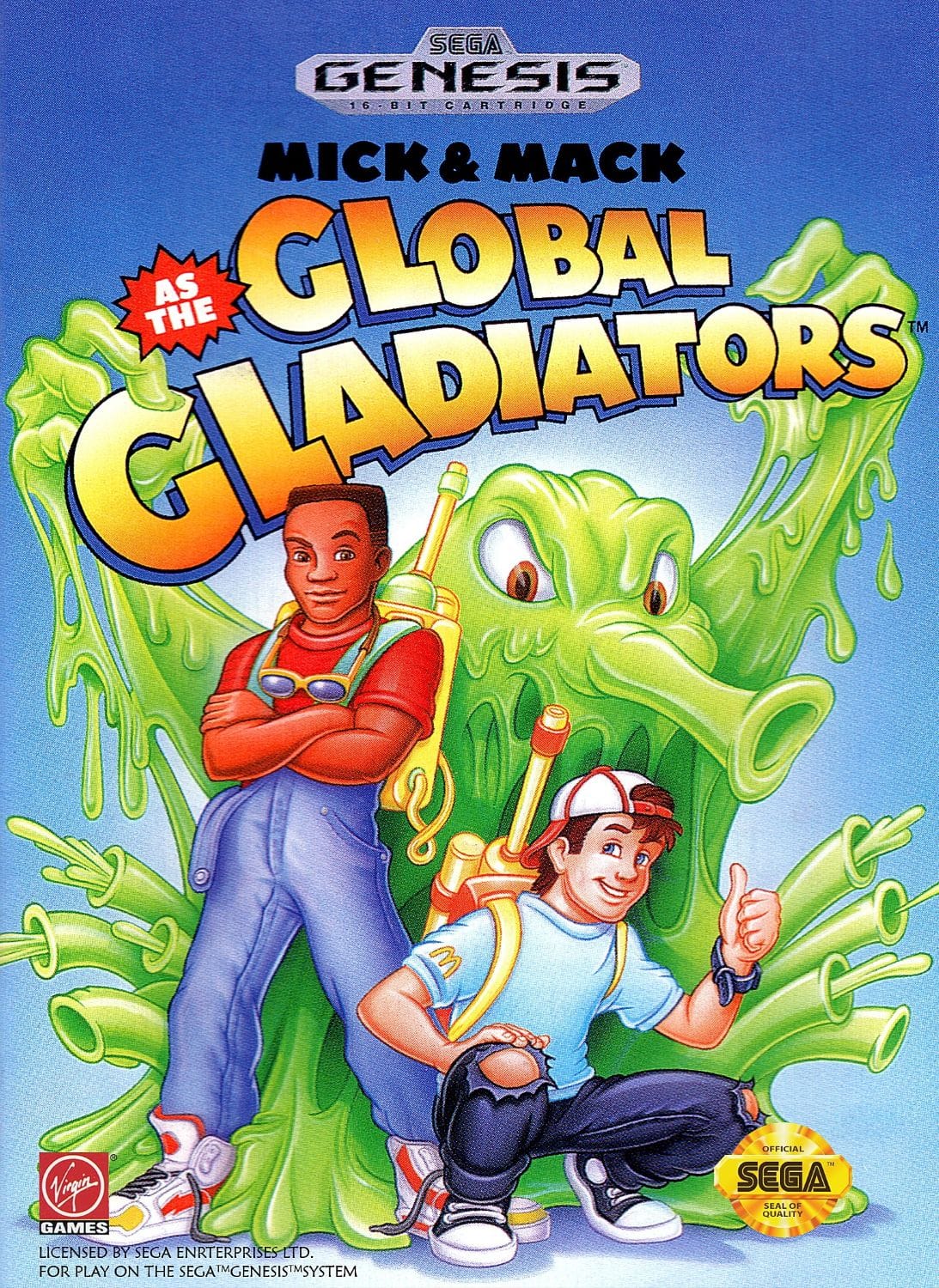
- Developer: Virgin Interactive
- Release Date: January 1993
Virgin Interactive, the same minds behind classics like Disney’s Aladdin, took a corporate mascot brief and somehow crafted a legitimately solid platformer that’s way better than it has any right to be. In Global Gladiators, you play as either Mick or Mack, two kids recruited by the McDonald’s universe version of Captain Planet to clean up pollution and defeat the villainous Captain Chaos. The gameplay is standard but incredibly polished run-and-gun action. The graphics are vibrant and detailed, with some fantastic parallax scrolling and large, well-animated sprites. The soundtrack, composed by the legendary Tommy Tallarico, is full of catchy, upbeat tunes that will get stuck in your head for days.
Why It's Worth Playing: When you look past the golden arches license, Global Gladiators is a testament to Virgin Interactive's ability to craft a fantastic platformer out of anything. With tight controls, excellent presentation, and a surprisingly charming premise, it stands as one of the best "corporate" games ever made. If you enjoy the polished feel of Virgin's other Genesis titles, you owe it to yourself to check out this bizarre, brilliant curiosity.
Tinhead
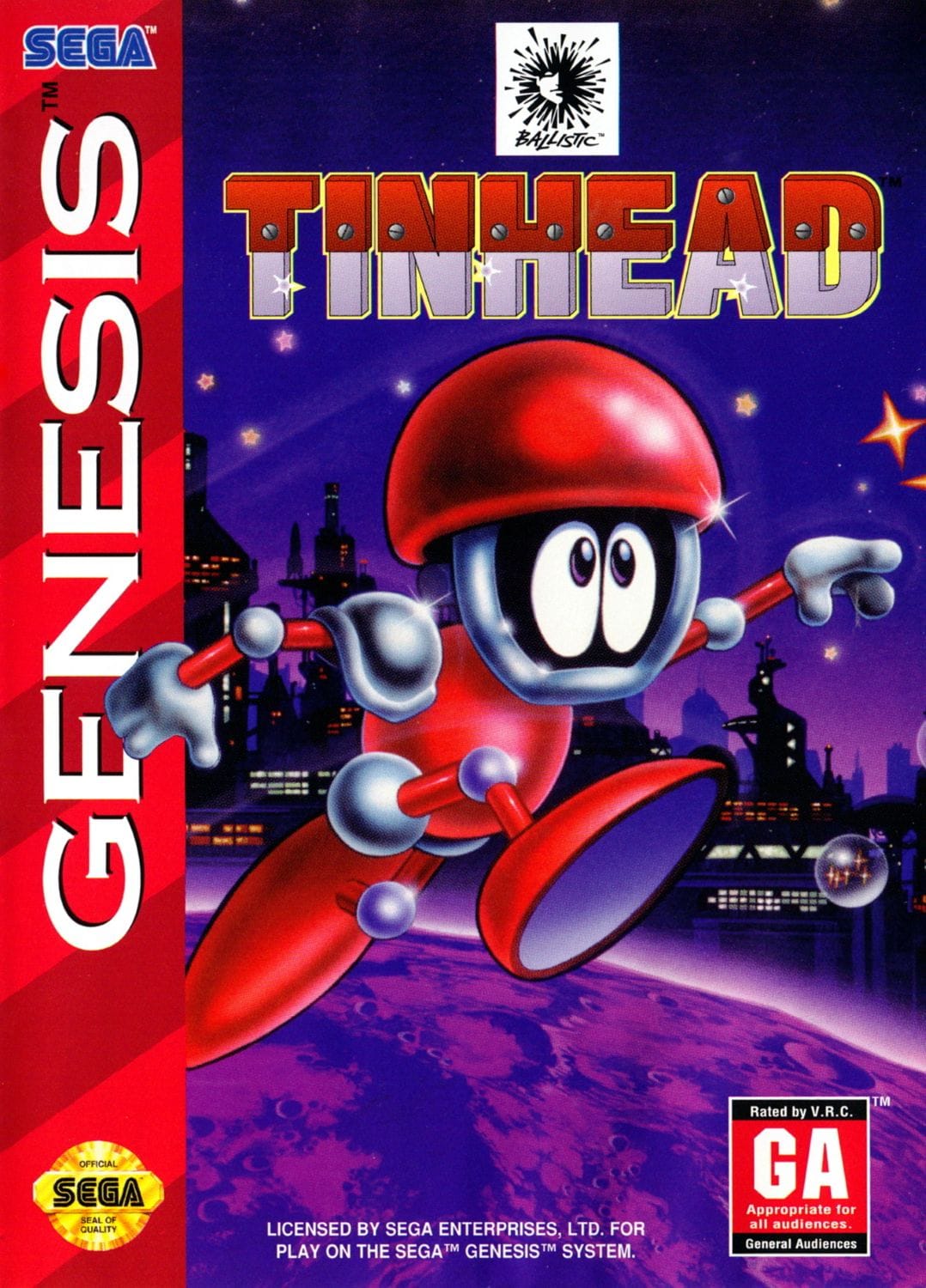
- Developer: MicroProse Software
- Release Date: August 19, 1993
In Tinhead, you control a little robot dude on a mission to save the galaxy, and his primary method of attack is firing bolts of energy from each of his hands independently. You can aim one arm up and one arm forward, creating a unique strategic layer most run-and-gun platformers completely lack. This dual-wielding mechanic forces you to think about space and enemy placement in a completely different way. The levels are sprawling and filled with secrets, encouraging you to use your multi-directional attack to explore every nook. Visually, Tinhead has a distinct, colorful sci-fi aesthetic. The enemy designs are creative, and the bosses are large and imposing.
Why It's Worth Playing: Tinhead is worth playing for its brilliantly unique core mechanic. The independent arm controls offer a strategic depth you just don't find in other platformers from this era. It's a thinking-person's action game that rewards careful play and spatial awareness. If you're tired of standard run-and-jump affairs and want a platformer that truly challenges you to engage with its world in a novel way, this is an absolute hidden gem. It’s tough, it’s clever, and it’s utterly unique.
Taki: Going Ape Spit

- Developer: Santos
- Release Date: January 31, 1992
Let’s just get this out of the way: Taki: Going Ape Spit is unhinged. The premise is even more so. You play as Taki, a sunglasses-wearing, skateboarding monkey whose mission is to… well, spit at things. A lot. You can launch globs of spit at enemies to stun them, and you can use your skateboard to gain speed and perform jumps. In theory, it’s a weird but workable concept. The graphics are actually quite detailed and colorful, with some large, expressive sprites. The soundtrack is a funky, upbeat collection of tunes that feels completely at odds with the on-screen chaos.
Why It's Worth Playing: Taki is a "so bad it's good" title that is perfect for a laugh with friends, if only to witness its sheer audacity. For collectors and fans of gaming's weirdest corners, this is a crown jewel of jank. It’s a frustrating, ill-conceived, and utterly memorable train wreck that has to be seen to be believed.
Toejam & Earl in Panic on Funkotron

- Developer: Johnson Voorsanger Productions
- Release Date: December 1993
Toejam & Earl in Panic on Funkotron took the iconic roguelike exploration of the first game and tossed it out the airlock, replacing it with a side-scrolling platformer. The gameplay is a mix of precise platforming and item-based chaos. You can find and use a wild array of funky presents, from springy shoes and super-slam attacks to temporary invincibility. The level design is sprawling and vertical, encouraging exploration to find every last hidden human. And the presentation? It’s a full-blown funkadelic explosion. The colors are vibrant, the music is an absolute masterpiece of 16-bit funk, and the whole game oozes a laid-back, humorous personality that is completely unique. It’s pure, concentrated vibe.
Why It's Worth Playing: Panic on Funkotron is not about saving the universe; it's about pest control on a planet that runs on a groovy bassline. The core hunting mechanic is fresh, the presentation is timeless, and the co-op mode is a blast. It's a bold, different, and incredibly fun direction for the series that deserves its own spot in the platformer hall of fame.
Cool Spot
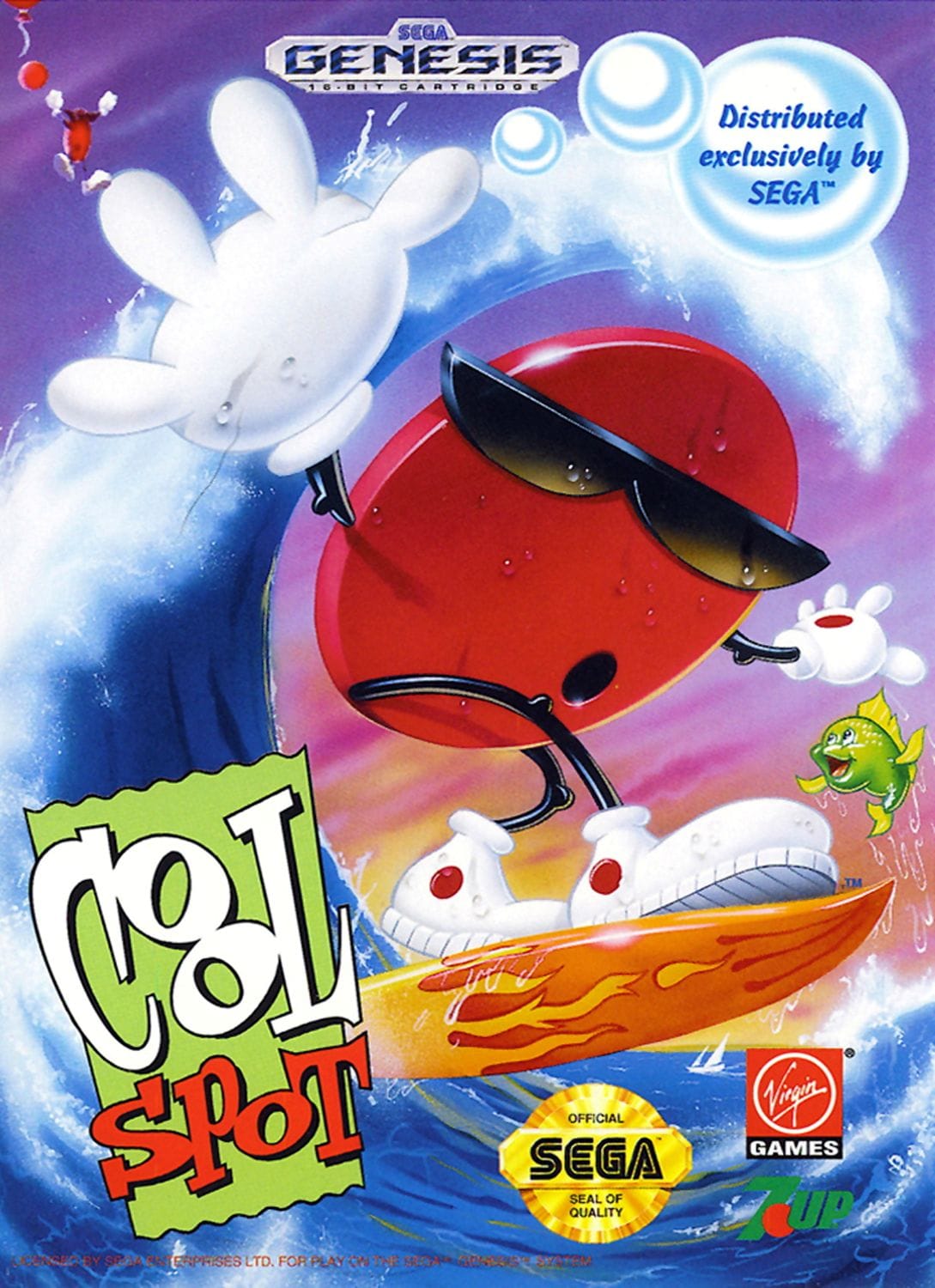
- Developer: Virgin Interactive
- Release Date: September 1993
A platformer based on the 7-Up mascot sounds like the peak of cynical ’90s marketing. But then you press start, and the entire premise is immediately, utterly redeemed. You play as Spot, a sentient red dot who has to rescue his fellow Spot buddies who are trapped in bubbles. The controls are responsive, the level design is clever, and the game strikes a perfect balance between action and light puzzle-solving. The colors are incredibly vibrant, the animation is fluid, and the use of parallax scrolling is some of the most impressive on the system, giving the levels a fantastic sense of depth. And the soundtrack? An absolute funky, upbeat, slap-bass masterpiece that will be stuck in your head for decades.
Why It's Worth Playing: Cool Spot is the ultimate example of a great developer elevating a terrible concept into a fantastic game. It’s a polished, challenging, and incredibly fun platformer that stands on its own merits, completely divorced from its corporate origins. With tight controls, brilliant graphics, and an all-time-great soundtrack, it’s not just a good “licensed” game—it’s a top-tier Genesis platformer, period. It’s a masterclass in 16-bit design and an utterly essential play.
Toy Story
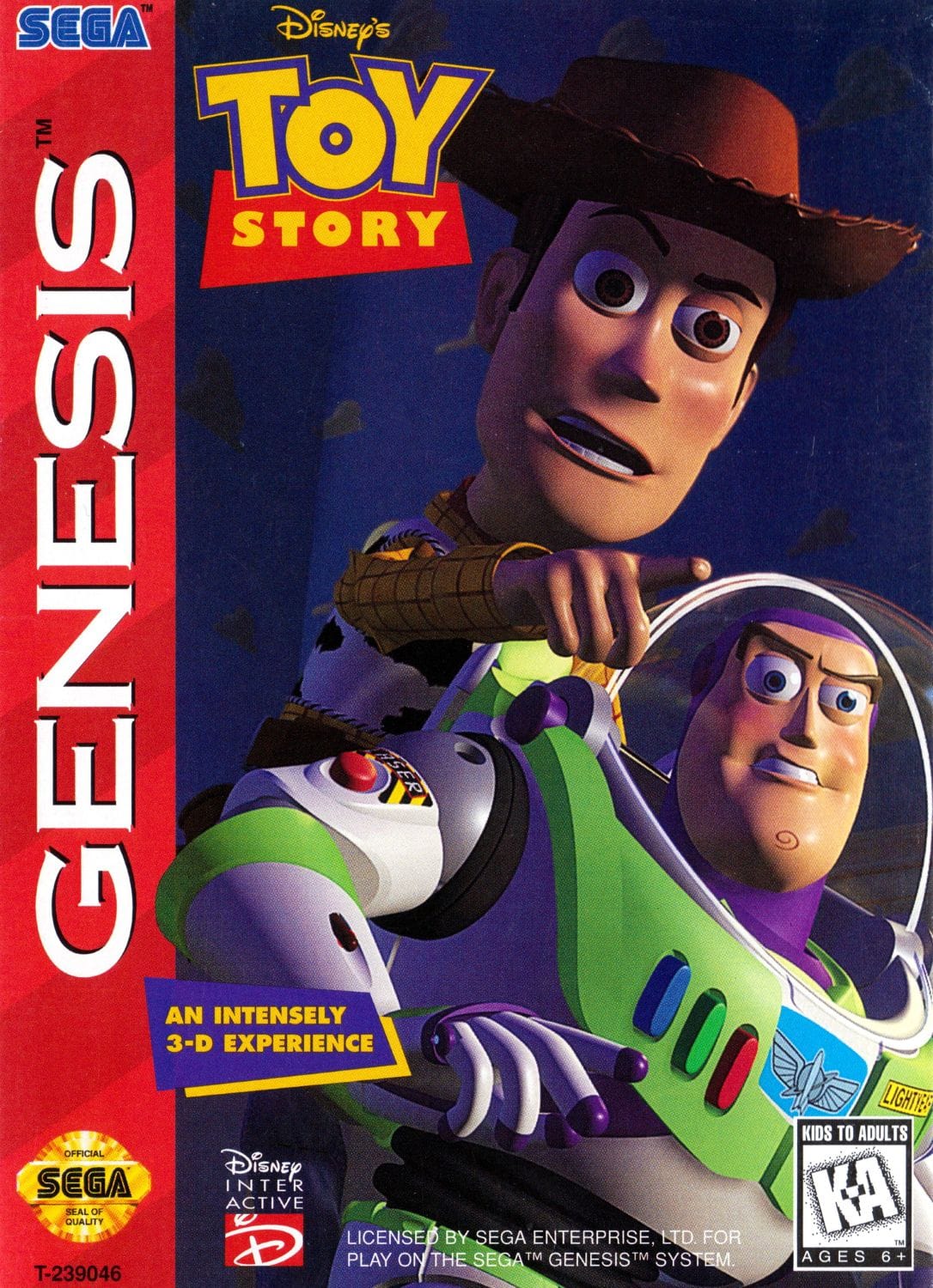
- Developer: Traveller’s Tales
- Release Date: November 22, 1995
Landing in the Genesis library right at the tail end of its life, Toy Story is a minor miracle. You play as Woody, and the game does an incredible job of making you feel like a tiny toy navigating the massive, perilous world of a human household. Visually, it was a showstopper in 1996. Using 3D pre-rendered graphics, the characters and environments have a unique, chunky charm that has aged remarkably well. The levels are packed with detail and clever use of scale. The soundtrack features solid MIDI versions of Randy Newman’s iconic score, and the sound design, from the squeak of Woody’s joints to the clatter of toys, is wonderfully immersive.
Why It's Worth Playing: Toy Story captures the charm, humor, and scale of the film perfectly, translating it into a diverse and consistently engaging platformer. For a late-generation title, it pushed the Genesis in new visual directions and proved the console still had tricks up its sleeve. It’s a polished, creative, and surprisingly challenging adventure that remains a high point for Disney and Pixar games.
Conclusion
And there you have it! Thirty reasons why the Sega Genesis remains a platforming paradise. In a generation defined by experimentation, swagger, and a fierce rivalry that shaped the entire industry, the Sega Genesis stands tall as one of the most imaginative playgrounds ever put on a shelf. Its platformers weren’t just genre entries—they were fast, strange, stylish, sometimes chaotic, always memorable.
Decades later, these 30 games remain vibrant artifacts of an era when developers pushed silicon to its breaking point and treated creativity as a competitive sport. Did we miss one of your personal favorites? The beauty of the Genesis is that its library is so deep, everyone has their own hidden gem. Let the friendly arguments begin!

